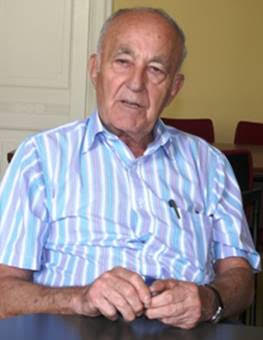
THE VOICE OF INTERNATIONAL LITHUANIA
|
VilNews has its own Google archive! Type a word in the above search box to find any article.
You can also follow us on Facebook. We have two different pages. Click to open and join.
|
Lithuania today
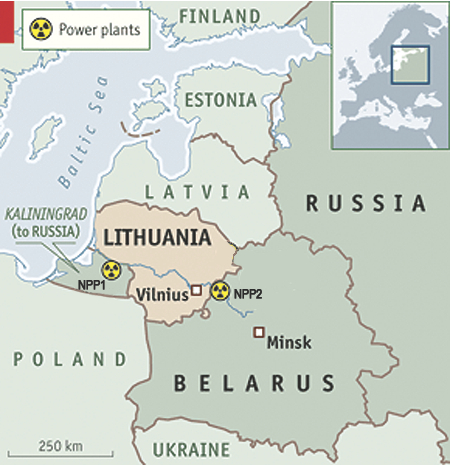
Kaliningrad and Belarus nuclear power plants. (NPP1 and 2)
on the border of Lithuania.
One NPP containing two reactors, will be situated in Astravets, Belarus, approximately 20 km (12 miles) east of Lithuania and about 50 km (31 miles) from its capital city of Vilnius. The other set of two reactors will be constructed in the Kaliningrad enclave approximately 10 km (6 miles) south and west of Lithuania’s border. (The Kaliningrad enclave is a small patch of Russian-administered land wedged between the European Union nations of Poland and Lithuania.) In case of a nuclear disaster, the two NPPs pose a grave danger to Lithuania and other North-European countries.
The Kaliningrad and the Belarus NPPs, by being built on the borders of Lithuania, place the entire country in a ominous nuclear vise (Figure 1). A nuclear failure at either plant would expose large and densely populated areas of Lithuania to deadly radiation and nuclear poisoning. The NPP in Belarus would impact the entire metropolitan Vilnius region and thus more than a third of Lithuania’s population (Figure 2). A failure in the Kaliningrad NPP would place approximately a fourth of Lithuania’s population at risk. (Figure 3). In total, more than half of Lithuania’s population would be subjected to nuclear-based devastation in the event that both plants experience concurrent nuclear disasters. While such simultaneous NPP failures may at first appear to be remote, they are not beyond the realm of the possible. One need only consider Chernobyl and the 9/11 attack as well as human error, negligence, defects in planning and construction, acts of terror, war, seismic activity and aircraft crashes.
Lithuania is deeply concerned in that Russia and Belarus have not coordinated or reconciled the site selection with Lithuania from a safety standpoint. Lithuania deems the proposed sites as major and unnecessary risks to its survival not only in terms of potential radiation poisoning of its population, but also the consequent devas¬tation of its land and urban areas. Any new nuclear plant construction must consider the consequences of the meltdowns in Chernobyl in 1986 and Fukushima in 2011. According to Gregory Yaczko, Chairman of the Nuclear Regulatory Commission, in his report to the American Association for the dvancement of Science Symposium in 2011, the area affected by the Fukushima nuclear disaster covers an 80 km radius, and at present it cannot be established when the displaced inhabitants could return to their homes.
Nuclear incidents do not recognize state or country borders, or even great bodies of water. As a case in point, Sweden suffered radioactive cesium contamination from the Chernobyl disaster even though it was some 500 miles distant from the site, including 200 miles over the Baltic Sea. It stands to reason that such volatile objects should not be constructed on the borders of a neighboring country exposing it to a risk of mortal danger. To preclude such an occurrence,
international conventions on nuclear safety require transparency, bilateral and multilateral review, and due process leading to a resolution of disputed issues. The parties of origin, in this case Russia and Belarus, are mandated to adhere to internationally established nuclear safety standards as established by the International Atomic Energy Agency (IAEA).
Notwithstanding Lithuania’s numerous requests directed to Russia and Belarus for the site selection criteria as to both NPPs, neither Russian and Belarusan authorities have produced any substantive data but for self-serving conclusory assertions that they are in compliance with safety standards. In contrast, IAEA and Espoo conventions require that there be compliance with clearly stated processes before the construction of new NPPs. They include: justification, generic design assessment, strategic siting assessment, national policy statement, licensing and planning. The sequence of these internationally established procedures are logical and necessary, and should be strictly adhered to and not be preemptively dismissed by the parties of origin.

Figure 2. Zones of nuclear endangerment by the Belarus nuclear power plant.

Figure 3. Zones of nuclear endangerment by the Kaliningrad nuclear power plant.
Summary of Issues
The Lithuanian American Council (LAC) is concerned that once the construction of the Belarus and Kaliningrad NPPs has commenced, Lithuania will be confronted with an irreversible situation. LAC agrees with Lithuania’s authorities that NPPs planned at the currently designated Belarus and Kaliningrad sites, constitute a threat to Lithuania’s existence. The following considerations summarize our concerns:
1.Consequences from structural damage to the reactors caused by seismic disturbances, external impacts, and acts of terrorism;
2.Questionable structural, electrical and mechanical integrities of subject NPPs;
3.Sufficiency of water and other physical resources needed to contain the effects of a nuclear disaster;
4.Safety of Lithuania’s population in the event of minor and major NPP failures;
5.Provisions for notification of emergencies and evacuation of the populace;
6.Effects on water, vegetation and habitat over the entire land area of Lithuania, and Kaliningrad and Belarus regions;
7.Availability of funds to cover shelter and subsistence for evacuees;
8.Plans and provisions to resolve long term contamination effects;
9.Short term and long term storage and removal of spent nuclear fuel;
10.Consent of the populations at risk
1. Consequences from structural damage to the reactors caused by seismic effects, external impacts, and acts of terrorism
The recent Fukushima nuclear accident has focused the international community on the need to evaluate the risks and consequences of all possible scenarios potentially placing nuclear reactors at risk. Notwithstanding this international consensus, Belarusan and Russian authorities continue to ignore, or at best minimize, the risks of earthquakes on the reactors at the proposed NPP sites.
Belarus in the EIA states that:
There is a zone in the southwest part of the region (…) In 1908, according to the archives and literary sources, a big earthquake took place in Ostrovetsky district with the epicentre being near the settlement of Gudoai. It measured 6-7 on the MSK-64 scale and the effects were substantial in magnitude.
However, in the following sentence, Belarus authorities assert that the “….maximum probable earthquake magnitude would not be expected to exceed a level of 5,” based on their own self-serving and unsubstantiated evaluation that there exists a “…low probability of stronger earthquake.”
Russia has not made any public earthquake assessments in the Kaliningrad region, even though in the immediate vicinity of the proposed NPP a Richter 5 level earthquake was recorded as late as 2004.
Furthermore, Ivan Grabelnikov, the chief engineer overseeing the Kaliningrad NPP project, in the course of a technical conference conceded that neither the VVER-1200 reactors nor its buildings have undergone simulation testing with respect to potential aircraft crashes at the site. On the other hand, nuclear facilities operating in Western Europe are currently required to substantiate that new reactors will be able to withstand such impacts. A direct plane crash into a reactor containment building would not only destabilize the reactor, but would also jeopardize the integrity of the onsite storage facilities housing the spent but still radioactive nuclear fuel. To the best of LAC’s knowledge, no protection is provided against such incidents at either the Kaliningrad or Belarus sites. This is especially disconcerting as there exists a major north-south flight corridor over the planned NPP site in Belarus. It is also a matter of record that in 2005, a Russian fighter jet actually crashed in Lithuania near the planned Kaliningrad NPP site.
2. Questionable structural, electrical and mechanical integrities of subject NPPs
Recently Russian authorities claimed that comprehensive stress tests (allegedly applying standards beyond those adopted by the EU) were performed on all NPPs in the Russian Federation with positive results. However, the structural collapse of the Leningrad-2 NPP containment building in the summer of 2011 raises questions about the veracity of such claims and the validity of the tests. Russia’s own internal reports confirm that equipment failures at nuclear power plants are fairly frequent because of “…such underlying causes as mismanagement, flaws in maintenance organization, manufacturing and design defects.”
Furthermore, the VVER-1200 reactors belong to a completely new Russian reactor series, dubbed as AES-2006. They are touted by Rosatom as the latest and safest technological achievement. But the fact is, this reactor model has no extensive history of operation to substantiate such safety or reliability claims. During the construction of a similar reactor in China, the Russian contractor received repeated complaints from the Chinese concerning the quality of materials used and equipment employed. These concerns eventually led to a significant delay in the NPP construction. During the first year of operation, the reactor in China had to be stopped twice to deal with unplanned maintenance procedures.
Both, the Russian Federation and Belarus ought conduct risk and safety assessments for these particular reactors applying IAEA test and evaluation protocols and provide documented assessments for review by the European Commission as well as to the Republic of Lithuania, as the principle affected and aggrieving party.
3. Sufficiency of water and other physical resources needed to contain the effects of a nuclear disaster
Sufficient water resources are needed at NPPs not only to cool reactors in the course of normal operation, but also to contain nuclear fires and reduce the escape of nuclear contaminants into the atmosphere in the case of an accident. The Fukushima nuclear disaster required several million cubic meters of water merely to limit the spread of fire. During the nuclear fire, even the quantity of water in the large Fukushima cooling basin was insufficient. A significant quantity of water had be pumped directly from the ocean to the site.
Limited water supplies at the Belarus NPP are a particularly critical issue. There are no significant water resources in the region. The nearest sizeable stream that is to provide and fill the cooling basin is several miles away. It is approximately the size of the Rock Creek in Washington, D.C., flowing more in the rainy season and nearly dry during summer droughts. Furthermore, the stream’s water level is some 42 m. lower than the plateau of the terrain of the NPP. This further limits water availability to contain critical reactor events. While the size of the proposed cooling basin is not known, it is obvious that short of creating a very large lake, a limited size cooling basin would not be sufficient to contain a reactor meltdown.
It also needs to be pointed out that down-flowing waters from the nearby creeks merge into the Neris River which is less than 30 miles downstream and meanders through the center of the city of Vilnius. The river, before reaching Vilnius, becomes the principal source of potable water for nearly a million people living in the metropolitan Vilnius area. In the event of leakage or fallout of nuclear contaminants into the area’s waterways, Vilnius and the surrounding area would become uninhabitable and the land unsuitable for agricultural use. It would decimate the wildlife in the region, and for many miles would poison the entire downstream river basin that is situated entirely within Lithuania’s borders.
With regard to water resources for the Kaliningrad NPP, Russia is planning to divert part of the sizeable Nemunas River to fill the cooling basin. The river, 6 miles north of the NPP, constitutes a common border between Lithuania and the Kaliningrad oblast, until it reaches the delta area, some 40 miles to the west. LAC has no knowledge of how much water would be diverted to accommodate the Kaliningrad NPP, the size of the proposed cooling basin, and whether the volume of water would be sufficient to contain a nuclear meltdown. However, it is certain that any down-flowing return of contaminated water from the NPP into the river Nemunas would seriously endanger the downstream part of the entire river basin and the inhabitants living along its shores. Of even greater concern is the ecological impact on the Nemunas river delta, merely 40 miles downstream from the NPP site. The delta area is located entirely within the territory of Lithuania, with water flowing extremely slowly or not at all. Atomic residue from the Kaliningrad NPP would accumulate in significant quantities, creating a cesspool of irradiated nuclear waste. The delta area is not only densely populated, but it is also a major wildlife sanctuary, particularly as a stopover point for migratory birds between Europe’s northern nesting grounds in summer and southern grounds in Africa during the winter season. In case of nuclear poisoning of the delta waters, the entire ecosystem of central Europe would be jeopardized.
4. Safety of Lithuania’s population in the event of minor and major NPP failures
Radioactive materials escaping from a nuclear power plant can have varying effects depending on the type of failure and the distance of populated areas from the failure site. In the case of the Chernobyl disaster, 30 workers died within a month after being exposed to high levels of radiation at that site. Many others, in the thousands, sustained serious injuries from radioactive exposure. Some of them died later, but many suffered ongoing illnesses, traumatized for the remainder of their lives. In the Fukushima radiation zone in the wake of the meltdowns high death rates were recorded among the abandoned livestock. Of the 3,500 cattle that remained in the radiation zone, 2,500 died, and the remaining appear terminally ill.
Large doses of ionizing radiation can cause cell death, while lower doses may interfere with cellular proliferation. Response to radiation depends on rapidity and the portion of the body exposed. Significant illness is certain, and death is possible, when a whole-body dose exceeds 4.5 Gy delivered over a short time interval.
Children and pregnant women are more susceptible to radiation injury because of their higher rate of cellular proliferation. After the Chernobyl meltdown, over the period of 1990-1998, 60% of children tested were found suffering from radiation effects; 1,981 of them were diagnosed with thyroid cancer.
Victims subjected to a high level of radiation either die shortly after exposure (cerebrovascular syndrome) or, if they survive, will sustain incurable longer term damage to their intestines, suffering vomiting and diarrhea, and to their bone marrow resulting in weakened red cell production and eventual onset of cancer.
Lower dose damage in the first thirty days rarely cause immediate danger to human life (GI syndrome), but symptoms of radiation can be felt as chronic fatigue, headache, fever, nausea, vomiting, anorexia, incurable sores, loss of hair, and eventually may develop into leukemia or other forms of cancer. Other effects could include genetic mutation, premature aging, and disorders of the nervous and mental systems.
The toxins and long term effect of radiation poisoning make it imperative that the impacted populace be immediately evacuated from the affected area to assure minimal exposure to radiation. It is also essential that needed medical assistance including medications be held in readiness and be made available to counteract the effects of radiation exposure.
Neither Russia nor Belarus has offered to discuss preparation and provision for such eventualities, and to date, the potential radiological impact of a nuclear accident on Lithuania’s population has not been properly addressed, let alone evaluated, by either of the project sponsors.
5. Provisions for notification of emergencies and evacuation of the populace
Early warning and extensive emergency evacuation provisions need to be established in bilateral discussions and treaties. Lithuania currently has a bilateral treaty with Belarus on early notification of nuclear accidents. Lithuania has also proposed such a treaty with the Russian Federation, but so far it has failed to respond. Furthermore, there are no discussions on how Russia and Belarus would facilitate, in the event of a nuclear disaster, the evacuation of Lithuania’s capital Vilnius and other densely populated areas. In the case of the Chernobyl accident, immediate evacuation of some 120,000 people during the first 24 hours had to be effected. Similarly, the Fukushima accident resulted in the evacuation of 170,000 people within a similar period. Since any Belarus and/or Kaliningrad NPP failures would affect mostly the people of Lithuania numbering in many hundreds of thousands, clear evacuation plans and adequate means to do so must be developed in bilateral agreements as required by the Espoo Convention.
6. Effects on water, vegetation and habitat over the entire land of Lithuania, and Kaliningrad and Belarus regions
In the Chernobyl and Fukushima nuclear disasters, large tracts of land were found to be contaminated. None of the agricultural products, be it vegetation or livestock, were suitable for human consumption. Even now several decades after the Chernobyl meltdown, the soil remains unsuitable for growing vegetation and raising animals.
Inasmuch as a significant nuclear leakage would involve contamination of major parts of Lithuania’s territory, bilateral agreements must be concluded, before any construction work is to commence, on procedures to avoid or minimize damage, and, on methods of compensation, including restitution of contaminated sites to their original condition. A model fund for restitution of contaminated areas has been developed by the United States. It is known as Comprehensive Environmental Response, Compensation and Liability Act (CERCLA) or Superfund. The model could be used as a basis for negotiation between Lithuania and Russia/Belarus. The statute assures that parties or organizations responsible for contamination are held accountable for costly cleanup and restitution of the contaminated sites.
7. Availability of funds to cover shelter and subsistence for long term evacuees
The Chernobyl accident resulted in some 330,000 people being permanently displaced, sustaining loss of their homes, places of business, and employment. The Chernobyl accident and the measures taken to deal with its consequences have cost the Soviet Union at that time – and later Belarus, the Russian Federation and Ukraine – hundreds of billions of dollars. Today, social benefits are paid to some 7 million people who have sustained harm from by the Chernobyl accident. Such payments are a huge burden on national budgets and, because of their size, in the long run, may not be sustainable.
Similar experience is facing the people of the Fukushima region. Of the 170,000 evacuated, some 70,000 people are unable to return to their former living areas as they are deemed too dangerous for habitation.
Any significant Belarus and Kaliningrad NPP failures involving a major radiation leakage or meltdown, would predominantly impact the people of Lithuania. Accordingly, adequate funds or insurance must be set aside by owners of the reactors and escrowed by a third party to pay for possible long term losses. Considering past experience, reluctance to acknowledge such events and even their severities, and refusal to honor agreements and promises, verbal assurances by the governments of Belarus and Russia to assume financial responsibility are inadequate. This question can only be resolved through ironclad commitments before any NPP construction is started.
8. Plans and provisions to resolve long term contamination effects
The Chernobyl accident involved the discharge of substantial quantities of radioactive substances into the environment. An area of 76,100 km2 was contaminated mostly with high concentrations of radioactive nuclides such as iodine 131, cesium-137 and strontium 90. The contaminations required mass evacuations of people. It disrupted the way of life and economic activity in various parts of Russia, Ukraine and Belarus. In just the first year after the accident, 144,000 hectares of farm land were taken out of use, forestry work was stopped in an area of 492,000 hectares, and most industrial and agricultural enterprises ceased operations in the affected area.
Assuming a uniform circular dispersion pattern within a radius of 70 km., a Chernobyl level accident at the Belarus NPP could contaminate approximately 6,000 km2 (approx. 10%) of Lithuania’s territory by high concentrations of nuclides. The affected area would include the entire city of Vilnius with some 600,000 inhabitants. A Chernobyl level meltdown at the Kaliningrad NPP could affect more than 10,000 km2 or about 16% of Lithuania’s area. Since radiation contamination of buildings and land would have long term effects and prevent their use, agreements must be reached on how the contaminated objects would be restored to their pre-damage state, or what other type of remedies need to be considered. While the likelihood of a Chernobyl-type accident is small, nevertheless, Lithuania’s concerns must be addressed and consideration given to alternative sites.
Minimal acceptable distances from the NPP to Lithuania’s borders must be established and assurances given that drainage and down-flow of any contaminated waters into its territory will be prevented. This all must be determined by mutual agreement between parties before construction of the NPPs commences.
9. Short and long term storage and removal of spent nuclear fuel
Used nuclear fuel is a solid material that is initially securely stored at nuclear plant sites. This temporary storage is one component of an integrated spent fuel management system that addresses all facets of intermediate and long term storing of radioactive nuclear fuel.
Spent nuclear fuel that remains stored at nuclear power plants, is normally contained in steel-lined, concrete pools or basins filled with water. Upon initial cool-off period of some 5 to 10 years, it is transferred to massive, airtight steel or concrete-and-steel containers. Eventually, after several decades the spent fuel rods may be transferred to a permanent geologic repository unless recycled for reuse, or a new technology is discovered for their use in other applications.
The stored spent material, similar to virgin nuclear material used by the NPP, is subject to terrorist attacks, natural disasters such as power failures, overheating due to coolant leakage, destruction by acts of war, and accidental or targeted plane crashes. Any damage to containers and their content can result in a dangerous release of radioactive contaminants. While it may be assumed that eventually spent nuclear materials would be transferred from the Belarus NPP by way of safely packaged railroad containers to some permanent storage sites in Russia, LAC has no information confirming that such will occur.
Of equal concern is the handling and storage of radioactive materials at the Kaliningrad site, since it is less than six miles from Lithuania. LAC has no information as to Russia’s plans concerning the storing of the spent radioactive materials at the NPP site. Neither is there any information on the transportation provisions which will be employed to transfer the spent nuclear waste for permanent storage. Russia’s EIA report on the Kaliningrad NPP provides a statement that a route of transporting the spent materials from the NPP in Kaliningrad to a burial site will be defined in the working documentation. In as much as railroad transport of such materials through Lithuania might not be admissible, the only other way to remove the materials would be either by sea transport or air. Some Russian publications imply that spent nuclear fuel would be transported from the Kaliningrad NPP by the Baltic Sea to the nuclear waste repository in Sosnovy Bor, near Saint Petersburg. However, if such a transport mode would be employed, Russia’s current EIA is silent on possible perils to all of the Baltic sea countries in case of a shipwreck or partial cargo loss.
Even though Lithuania has posed questions to Russia and Belarus on methods of disposal of the spent fuel, the LAC notes that Russia to date has failed to address or even seriously acknowledge this critical issue.
10 Consent of affected public, alternative sites, bilateral agreements
Russia and Belarus are disregarding Lithuania’s objections to the proposed construction of nuclear plants adjacent to Lithuania’s border. The site locations for the nuclear reactors pose a threat to Lithuania’s survival as a nation. Accordingly, the construction of both NPPs are in violation of the Espoo and IAEA conventions.
The Espoo Convention on Environmental Impact Assessment in a Transboundary Context of 1991 addresses the responsibilities of the Parties of origin (project initiators).
The Espoo Convention in Article 2 requires that:
1) The Parties shall, either individually or jointly, take all appropriate and effective measures to prevent, reduce and control significant adverse transboundary environmental impact from proposed activities, and
2) the Party of origin shall provide, in accordance with the provisions of this Convention, an opportunity to the public in the areas likely to be affected to participate in relevant environmental impact assessment procedures regarding proposed activities and shall ensure that the opportunity provided to the public of the affected Party is equivalent to that provided to the public of the Party of origin.
Article 5 notes that:
The Party of origin shall, after completion of the environmental impact assessment documentation, without undue delay enter into consultations with the affected Party concerning possible alternatives to the proposed activity, including the no-action alternative and possible measures to mitigate significant adverse transboundary impact and to monitor the effects of such measures at the expense of the Party of origin.
Article 6 states that:
The Party of origin shall provide to the affected Party the final decision on the proposed activity along with the reasons and considerations on which the decision was based.
Furthermore, the IAEA Commission decision, 1999/819/Euratom, of November 16, 1999, concerning the accession to the 1994 Convention on Nuclear Safety by the European Atomic Energy Community (Euratom) notes that “In choosing the site, one must consider, inter alia, its effect on the safety of the installation and the effects of the installation on individuals and the environment.” It notes further that other contracting parties in the vicinity of the site must also be consulted if the installation is likely to have consequences for them.
While Belarus claims to have presented Lithuania with an environmental impact assessment regarding its NPP, LAC is informed that the Lithuanian government has rejected the assessment saying that questions submitted to Belarus have not been responded to properly, and that claimed public hearings in Vilnius were either a sham or fabrication, and that actually no substantive consultations have taken place.
There was even less consultation with Russia regarding the Kaliningrad NPP. Russia has neither held public hearings nor offered to participate in bilateral consultations despite Lithuania’s request to do so.
It is noted that Constituents in Belarus and Kaliningrad as well as in Lithuania in a series of public demonstrations have repeatedly voiced their opposition to the construction of subject NPPs.
LAC is concerned that the NPPs’ site selections were based on political considerations rather than on Espoo and IAEA established criteria requiring that the selection be grounded on sound environmental criteria and particularly by addressing the safety of the population situated near the site.
Lithuania has filed a complaint with the secretariat of the Espoo Convention stating that Belarus, contrary to its assertion, has not complied with mandated procedures of the environment impact assessment process, as is required by the Espoo Convention. Lithuania has also submitted a similar note to the secretariat of the Espoo Convention on the deficiencies in Russia’s response regarding the proposed NPP in Kaliningrad. Russian authorities blatantly assert that they are in compliance with Espoo and are following its provisions, notwithstanding its failure to enter into any consultations with Lithuania.
Conclusion
Based on the analysis presented here regarding the two proposed NPP sites, it is amply clear that the EIA process has not been satisfactorily completed and that the requirements of the Espoo Convention have not been fulfilled by Russia and Belarus. Considering the potentially severe consequences for Lithuania in the event of a nuclear failure at either the Belarus or the Kaliningrad reactors, the international community must respond and insist that established nuclear standards be adhered to. LAC urges the United States legislative and executive branches to address Belarus and Russia’s governments insisting that they cease any further activity on these projects until the EIA process is accomplished and all issues are resolved in accordance with international nuclear safety standards, principles, and conventions.
Prepared by:
Dr. Stan (Stasys) Backaitis, P.E., SAE Fellow1
Lithuanian American Council
- Bookmark :
- Digg
- del.icio.us
- Stumbleupon
- Redit it
- Posted by - (1) Comment
A LETTER FROM MASHA KAMENETSKAYA, ONE OF MANY
PROTESTERS IN ST. PETERSBURG, RUSSIA, LAST SATURDAY
When you feel that you have done the right thing in the right place
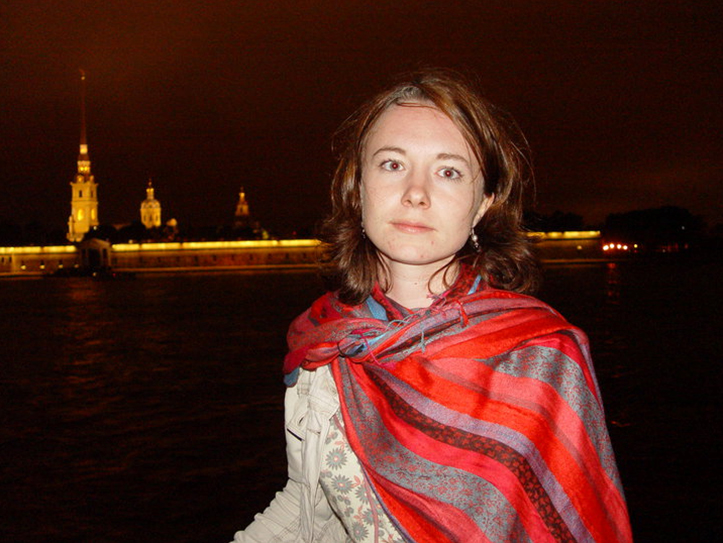
This is a letter from Masha Kamenetskaya, a young journalist and writer from St. Petersburg, Russia. She is describing her participation in the evening after the 10 December protest for fair elections in the city on the Neva.
SATURDAY 10 DECEMBER 2011: Finally I am home -- after a good and such a... real day. Even a romantic one, in some sense, when you feel that you have done the right thing in the right place.
I spent the day with my friends and loved ones -- who would have thought that a meeting of protest can be such a great occasion to see friends and to catch up with them? And I spent the day with the people living in the same city as I do. The people who smiled and who cared.
The day started with snow (in which some people saw the symbolic connection with the symbolic “against the war” white ribbons and white flowers worn and carried by the meeting participants), continued with lunar eclipse (have you heard of it? it took place an hour before the meeting in question on Pionerskaya Square), reached its pinnacle in the square itself, and ended with me at the theatre.
You want to know about the meeting, of course. While we were walking there, I saw quite a few people, those who supported one of the peaceful ideas for the meeting and who carried white carnations; police women jumping out of their cars like snowflakes; old-aged people, accompanied by their grandchildren -- all headed there. And I saw hundreds and hundreds of others, too. .A helicopter was spinning above the Kazan cathedral. OMON [special security forces -- auth] trucks were "hidden" from view just around the corner. There were also internal-security military vehicles there, too, with, probably, lots of soldiers inside -- but over the course of the day, we never once saw any Army soldiers.
People were snapping photos on their way to the square and saying cheerfully into their phones: "So where are you? Where should we meet?" It seemed as though they were all going to a big party.
Shop clerks and waiters from cafes nearby were looking out the windows and also -- smiling, curious about the goings-on.
At the square itself: flags of different political parties, a flag with the "31" on it [reference to the Edouard Limonov’s “Strategy-31” political initiative], a flag with Che Gevara’s portrait, a black and yellow flag of unknown origins, protest posters -- the surreal decoration of a huge New Year’s tree. The Griboedov statue looking down on us all. An advertisement billboard with Dmitry Khvorostovsky [popular opera performer -- auth] on the back of it.
Line of the OMON policemen, less emotional still than the stone Griboedov. The meeting was a legal one [approved by the municipality – auth.], and so the OMON guys were all relaxed (by their standards), they were just directing the traffic, just watching and observing. And they actually were not an eyesore today. Some photographer trying to snap a shot of a picturesque, perfectly orotund OMON policeman. He would have none of it. "But why not? Where does it say I can't photograph you?" - the photographer asks plaintively. The policeman says nothing. This dialogue in itself already feels like a small victory, doesn’t it? For the both sides.
Someone is shouting slogans. I can't see the face of the speaker. Someone has pinned to his a coat a large piece of paper with quotes from the Constitution of the Russian Federation. Someone is handing out flyers and advisory notes for the meeting’s participants. Several photographers are climbing up on the trees to catch the full view. Some young people with hand-held cameras are interviewing people -- "for their blogs," they claim.
I am trying to find the rest of my friends – the phone connection is spotty.
It's 3.30 pm, people continue to arrive from every direction. Even at this point there are more of them than the officially stated "seven thousand" attendees. More than ten thousand even (we measured the number by eye view – based on the size of the square and the approximate crowd density). The crowd feels smaller because no one is pushing or elbowing their way through. One French guy in our party says: "Not that many people. In France, in Paris, we have one million in the streets on such important occasions." So ok, maybe for us this is just a start.
There are some famous speakers at the gathering -- Artemiy Troitsky [well-known music critic – auth.], Lev Lurie [noted local historian – auth.], Victor Shenderovich [popular satirical writer – auth.]. I can see in the crowd others journalists, artists, writers. I can feel people all around me, but from my vantage point, I’m not experiencing the crowd in the negative, threatening sense of the word.
They are singing up on the stage. It feels strange, but it makes sense, somehow. There are also some stupid, excessively aggressive slogans being shouted (such as "Poltavchenko - to Chechnya!" [Poltavchenko being the newly appointed governor of St. Petersburg – auth.], which previously had been declared "unwanted" in the social-networks discussions. There are also some idiots in the crowd who later on would ignite fire bombs, but their number is very small.
We discuss issues related to today’s events, as well as our personal matters. But we all are keenly mindful of where we are. It's getting cold, and we start to regret we didn't bring hot tea. We go to the pizza parlor across the street. It's noisy and very crowded in there. The pizza-parlor bar seems to be pulling in its weekly haul in just one hour. For a split second I get the strange feeling I know everyone in here. It's nearly 5 pm. The “official” part is to start wrapping up shortly. Later I will find out there were provocateurs in the crowd, too, inciting people to "overthrow the government." They were promptly arrested, which doesn’t feel right, either. But their actions were stupid. Most people in the square don't want to overthrow anything, they just want fair elections.
And off to the theatre I go from there.
The performance I watch allows the actors to interact with the audience. One of the actors, playing a clown of sorts, comes off stage to walk in-between the rows. "Who did you vote for?" - he asks random people in the audience. "Oh, you didn't vote? Then you voted for "EdRo!" [the United Russia, pro-Putin party – auth.] This is quite unimaginable – this fearlessness. They are acting, of course, but they also want to show they care about more than the mere acting. Then they proceed to drag onto stage a random audience member, for public’s entertainment. "Did you go to the Pionerskaya square?" -- they inquire of the man all of a sudden. "I forgot," -- he mumbles. "Oh, how about that, you forgot!" – the actors retort in saccharine voices. -- "I don't know where it is exactly," the man stammers. -- "Oh, indeed, it must be so difficult to find out!" -- they nod sarcastically. -- "Now, go away!"
I am pleased -- not because of the performance as such, but because these guys on the stage played fairly, openly. They have a voice and they know how to use it.
The only disappointment of the day was... I don't know if this makes any sense to you... the TV-show "ProjectorfParisHilton." [Number one-rated comedy talk show on Russian TV – auth.] It is a show with four guys sitting at the table and discussing the news of the week from the humorous perspective. Until now, I used to respect those four fellows, I thought them clever and funny. They could have handled themselves and the situation in the country with dignity this time also, even though they work for the government’s primary TV channel, Channel 1. They also play clowns of sorts, you know. I was waiting to hear what they had to say.
Well, and what did they do? They just MENTIONED the elections briefly, and then they moved on to discussing some soccer match, as though there was nothing else of importance happening in the country. It was both un-funny and insincere. I realize that they had been told to keep their mouths shut about the elections, and so on. But this was their opportunity to use their voices, as some other public people have done. It would have been better if they simply, literally had kept silent. They could have just refused to go on the air this week. But they chose to obey the command.
Yet still, in all, this was a good, inspiring, honest day. I heard from other people those same words, too: "I really enjoyed this day!" – a very atypical statement for the normally skeptical and withdrawn citizens of for St. Petersburg.
I was thinking of how to finish this letter. I was thinking of all those big themes of today: inspiration, changing the rules set by others, trying to combat fear. And this is what came to mind:
‘It's a pun!” the King added in an offended tone, and everybody laughed, `Let the jury consider their verdict,' the King said, for about the twentieth time that day.
`No, no!' said the Queen. `Sentence first--verdict afterwards.'
`Stuff and nonsense!' said Alice loudly. `The idea of having the sentence first!'
`Hold your tongue!' said the Queen, turning purple.
`I won't!' said Alice.
`Off with her head!' the Queen shouted at the top of her voice. Nobody moved.
`Who cares for you?' said Alice, (she had grown to her full size by this time.) `You're nothing but a pack of cards!'
Which, do you think, are they key words here?
- Bookmark :
- Digg
- del.icio.us
- Stumbleupon
- Redit it
- Posted by - (1) Comment
Worldwide revolts against
egocentric, greedy leaders
- but not in Lithuania

2011 has been the year when people around the world began to speak up. Leaders in many countries, be it in politics, finance or other areas, have this year been forced to realize that it no longer is possible to deceive their citizens. In some countries the protests have evolved into revolts, often bloody, in which state leaders have been forced to abandon their posts.
But people in Lithuania have not reacted like that, despite the fact that the downturn and tightening measures they have been exposed to probably have been the worst and toughest in Europe.
Here in this country the elderly people sit in their small, dark apartments and suffer themselves quietly through catastrophic difficult time after their already minimal pensions were drastically cut, while prices for heating, electricity and food continue to rise.
Nor do the young take to the streets to protest against the injustice they are exposed to. Instead, they pack their
suitcases and leave their home country. Many probably forever. 350 persons every day, I have been told.
“Before they realized what is going on and who was robbing them, the Lithuanian people got clubbed by PM Kubilius’ ambitious austerity policy and the younger ones started emigrating in catastrophic numbers, seeing no future in the country whose GDP was reduced (from a low post-Soviet level) by some 20% by the combination of the old nomenklatura rent-seeking policies and the global Great Recession. Lithuania is hollowing out, unfortunately,” wrote Dr. Val Samonis in an article here in VilNews last April, concluding that “the Greeks won, the Lithuanians lost!” See https://vilnews.com/?p=5117
“The Baltic states have discovered a new way to cut unemployment and cut budgets for social services: emigration. If enough people of working age are forced to leave to find work abroad, unemployment and social service budgets will both drop. This simple mathematics explains what the algebra of austerity-plan advocates are applauding today as the “New Baltic Miracle” for Greece, Spain, and Italy to emulate. The reality, however, is a model predicated on economic shrinkage as a result of wage cuts. In the case of Latvia, this was some 30 percent for Latvian public-sector employees (euphemized as “internal devaluation”). With a set of flat taxes on employment adding up to 59% in Latvia (while property taxes are only 1%), it would seem hard indeed to present this as a success story.”
This writes the professors Jeffrey Sommers, Arunas Juska and Michael Hudson in today’s VilNews, under the headline "The Baltic Tigers" False Prophets of Economic Austerity.” See http://www.globalresearch.ca/index.php?context=va&aid=28085
Contempt for leaders implies social revolution
Incompetence leads to loss of confidence in directing classes
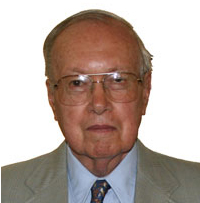
Here is another interesting article, by T.R. Fehrenbach in San Antonio express-news:
A large part of the world is continuing to show restiveness and rebellion toward the groups that run society.
Not just to governments, to which Europeans have become rather cynically apathetic — but to the entire “expert” structure of modern societies. Governments can always be changed by bullets or ballots, but distrust of and contempt for the directing classes implies social revolution.
Historically, several things have brought this about. In 14th century France, the failure of the feudality to protect the kingdom against the English created a vast, bloody peasant uprising. Nations that lose wars usually repudiate their ruling bodies. And sometimes proof of sheer incompetence may bring down the leading classes, whether chosen by birth, economic or military power, or election. In fact, if ruling classes precipitate their downfall, it proves their incompetence.
Incompetence is often more a spur than oppression. From my war experience, I know that troops would rather serve a capable SOB than a popular, wishy-washy commander. (You can cuss the first; the second may make you dead.) Nothing can destroy an army faster than loss of confidence in its leaders, and that goes for nations.
Which brings us to the question: Today, whom do we trust?
Politicians? The polls, where taken, indicate otherwise, from Europe to America. After all, no president, premier, secretary of the treasury or finance minister, nor any chief economic adviser or council predicted the current mess — and in the aftermath, all show symptoms of the Japanese disease, which causes governments to either not know what to do, or knowing, lack the bowels to do it.
Bankers and financial bigwigs? Since 1908 most people love neither them nor their shills and Wall Street analysts, for the reasons listed above. They have shown, in crisis, that their primary instinct is to save their own asses. This of course spawns cowardice in “the markets.”
Media, including pundits and script-readers? These put forth myriad versions of reality, guided more by their stomach juices than rational perception of what happened and who did it. Politicization has killed much trust in media. People no longer believe what they read in the funny papers, if they read them at all.
Economists? See politicians and bankers, above. They are the last to grasp what's going down (or will go down), and this dismal crew can't agree on much in any case. (Let me say in fairness that modern economies are too complex to allow working models or money games. If economists went back to basic economic principles — read Adam Smith — and abjured pet theories and half-baked panaceas, they might be worth paying.)
Clergy? The mainline, or mainstream churches are so caught up in populist neo-paganism (that is, modern culture), that they provide little relief or comfort.
Can any leading class be trusted? Polls show that Americans trust the medical profession (nurses over doctors) first and the military second. OK. These professions are the most vital to society, whose first duty is to survive.
Only incompetents would want to harass the first and down-size the second.
Read more: http://www.mysanantonio.com/news/article/Incompetence-leads-to-loss-of-confidence-in-1920816.php#ixzz1g19JohO1
- Bookmark :
- Digg
- del.icio.us
- Stumbleupon
- Redit it
- Posted by - (1) Comment
Russia is seeing the largest show of public anger in the country since the collapse of the Soviet Union 20 years ago. The centrepiece is massive rallies in Moscow, with more than 30,000 people demonstrating. But protests take place in more than 70 other cities in the sprawling country.
Vladimir Putin,
the beginning of the end

Apart from silencing opponents and enriching personal friends, the one thing Vladimir Putin was really good at was fixing elections. In this, he had a perfect track record since March 2000—until last Sunday. The Russian parliamentary election on December 4th was neither free nor fair. Several opposition groups had been barred from the ballot; officials pressured voters to support the ruling party; the vote-count was marred by ballot-stuffing and the rigging of protocols. But even in these conditions—and even by the official figures—most Russians voted against Vladimir Putin. His party, United Russia,received 49.3 percent of the vote, losing its two-thirds supermajority in Parliament for the first time in eight years. Compared to the last poll in 2007, when it registered 64.3 percent, United Russia’s result represents a net loss of 13 million votes and 77 seats in the 450-seat Duma (down from 315 to 238).
The 2011 election was a turning point for Putin’s regime. Not because the new parliament will rebel against the Kremlin—it will likely be just as obedient as before. Not because the three officially approved parliamentary “opposition” parties (the Communists, the left-wing Just Russia, and Vladimir Zhirinovsky’s nationalist LDPR) will pose a serious challenge—on important issues, they will likely follow the Kremlin’s orders. It was a turning point because December 4th shattered the myth of Putin’s invincibility. The regime whose leaders clearly counted on maintaining their supermajority (Duma Speaker Boris Gryzlov declared that the party was not planning to lose “a single seat”) failed to reach even the 50 percent mark. From now on, voters who were intimidated (especially in the provinces) will not be intimidated as easily. Careerists who backed the regime for personal advancement will begin weighing their options. After 12 years of standing still, Russia’s political pendulum is beginning to swing in a new direction.
The election itself represented no improvement. The head of the OSCE’s observation mission aptlycompared the poll to “a game in which only some players are allowed on the pitch, and then the field is tilted in favor of one of the players.” Nine opposition parties—from the center-right Popular Freedom Party to the left-wing United Labor Front—were barred from the ballot altogether. Television coverage was heavily slanted toward the ruling party. Administrative interference from officials ranged from openly coercing state employees into backing United Russia to conditioning future budget allocations on the party’s vote tally. On voting day, there were numerous cases of ballot-stuffing, multiple voting, unlawful eviction of observers and journalists, and the outright rigging of protocols. At 30 percent of polling places observed by OSCE monitors, the vote count was assessed as “bad or very bad.” The Moscow-appointed leaders of the North Caucasus once again proved faithful providers of Kremlin votes: United Russia registered 91 percent in Ingushetia, 92 percent in Dagestan, and 99 percent in Chechnya. Russia’s sole independent election monitoring group, Golos, found itself under attack from the authorities: the group was investigated and fined, its director was detained at the airport, and her laptop confiscated. Ten percent of Golos monitors were denied access to polling places under various pretexts. On election day, the websites of leading independent media organizations, including Ekho Moskvy radio, were crashed by sustained cyber-attacks.
United Russia’s actual result was likely much lower than the official figure. An exit poll conducted by the Institute of Social Studies put the ruling party’s vote at 38 percent (officially 49.3 percent), followed by the Communists with 24 percent (officially 19.2), Just Russia with 15 percent (officially 13.3), the LDPR with 14 percent (officially 11.7), and the liberal Yabloko party with 5 percent (officially 3.4). The latter figure is significant. Crossing the 5 percent threshold would have given Yabloko—the only pro-democracy party on the ballot—not only a voice in Parliament, but also unimpeded access to presidential and regional elections (parliamentary parties do not have to collect signatures to register for the ballot). Yabloko’s votes were most obviously stolen in Moscow, where its 18 percent votetally reported by independent observers was halved to 9 percent in the official protocols.
The day after the election, in what became the largest pro-democracy rally in a decade, 10,000 people gathered in downtown Moscow to protest the unfair vote. Hundreds were arrested and spent the night in police cells. Prominent activists Ilya Yashin and Alexei Navalny received 15-day prison sentences. On Tuesday, the arrests continued, with opposition leaders Boris Nemtsov, Sergei Mitrokhin, and Eduard Limonov among those detained by police. The Interior Ministry has confirmed that it is sending its elite Dzerzhinsky division to “keep order” in the capital.
With the majority against them, and with more and more people prepared to express their frustration not just at the tainted polls, but on the streets, Russia’s leaders face a dilemma. They can either take steps to reform and liberalize the political system—and almost certainly be voted out of office. Or they can attempt to preserve their power by further repression—and likely repeat the fate of Hosni Mubarak. Either way, Putin’s exit now seems merely a matter of time.

Read more: http://www.worldaffairsjournal.org/blog/vladimir-kara-murza/vladimir-putin-beginning-end
- Bookmark :
- Digg
- del.icio.us
- Stumbleupon
- Redit it
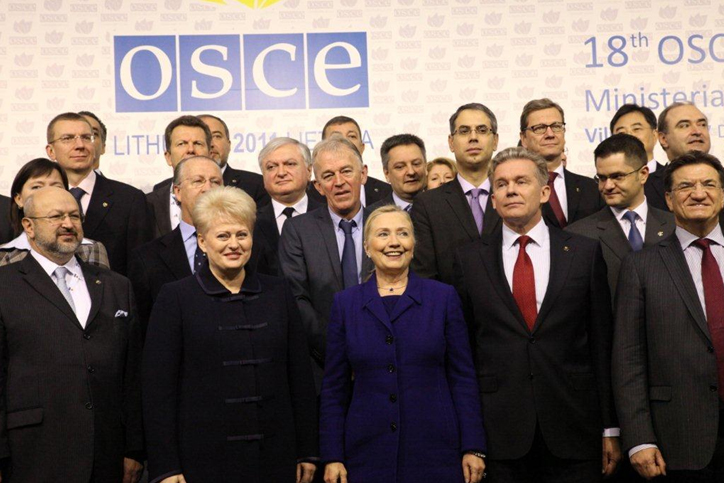
U.S Secretary of State Hillary Clinton and President Dalia Grybauskaitė fronted the OSCE conference in Vilnius this week.
By Mark Kurosky
mark.kurosky@gmail.com
This week The Republic of Lietuva has demonstrated its prestige and accomplishment being a contemporary world player and a voice for democracy taking center stage hosting the OCSE Ministerial Conference and the ESCO "Making Women's Voices Heard" convocation. Lithuanian President, Dalia Grybauskaite, must be offered kudos for assuming a leadership helm in both of these world conferences. Witnessing President, Dalia Grybauskaite, partner with and stand side by side US Secretary of State, Hillary Clinton, a woman undeniably known as the spouse of one of the most powerful men in the world in contemporary history, can only be a source of tremendous pride for Lithuanians worldwide.
During an address at the "Making Women's Voices Heard" event, and as quoted on the Lithuanian Presidential website, President Dalia Grybauskaite stated, "Any discrimination impairs the well-being of our societies. Gender gaps, glass ceilings and brick walls - an environment you navigate daily. Only through personal example and greater visibility we can attract everybody's attention to this problem and encourage combating it."
The Lithuanian President further "urged participants of the discussion to be good examples in the fight against gender inequality by assuming more responsibility in decision making, showing personal initiative, efforts, and persistence. She underlined that only public and vocal messages about gender equality issues could encourage women to be more determined in the struggle for their rights". The President praised Lithuania's efforts in the protection of women's rights and claimed Lithuania's example of such "good practice".
In stark contrast to the foregoing, and under the witness of the world's center stage spot light, one must then ask how President, Dalia Grybauskaite, the members of the Lietuva Seimas, and the contemporary, educated Lithuanian society at large, can not only tolerate, but actively promote openly stated discrimination toward gays, lesbians, bisexuals and transgendered members of Lithuanian society.
A looming white elephant in the Lithuanian living room
It seems Lithuania's human rights agenda is both conditional and selective. How ironic that President, Dalia Grybauskaite, takes a valiant position on one cause and yet ignores another as a looming white elephant in the Lithuanian living room. In the greater scheme of things, is this not even hypocritical? Yet, perhaps one cause only deflects the denied importance of another. For anyone aware of the bigger picture of the state of affairs in contemporary Lietuva this is only a conundrum. Although gender equality in itself is valid, in the wider scope of the premises of basic human values of the European Union, discrimination based on sexual preference or sexual identity is no less than intolerable. Intolerable. Within due time, and not soon enough, these affairs in Lithuania will be challenged by the governing bodies of the European Union.
And, with Lietuva in this week's world view as host to two high level conferences, and on the very day of her departure from Vilnius and arrival in Geneva, Switzerland, US Secretary of State, Hillary Clinton, presented a landmark speech stating, "The US has publicly declared it will fight discrimination against gays and lesbians abroad by using foreign aid and diplomacy to encourage reform".
The irony of such a proclamation on the day of Hillary Clinton's departure from Lietuva can surely be no mistake. Perhaps Lietuva should well hear this bell tolling loudly for her in Vilnius, in the Presidential Palace, and in The Seimas. For Hillary Clinton to make such an unapologetic statement for this "other arena of human rights" at just such an optimal moment, and to covertly imply this as a personal message to Lietuva, could not have been have been any more profound than had Hillary Clinton made this speech prior to departing Lietuva. Such a statement posed by Hillary Clinton inside Lietuva would have been a personal affront and smear to President Grybauskaite, and, obviously, Hillary Clinton thinks highly enough of the Lithuanian President to shield her from such pubic world disgrace. But disgrace is still disgrace whether it be addressed at afar from Geneva or from the floor of the LitExpo or The Seimas.
Lietuva's official governmental position on "selective human rights", and its mentality of discrimination based on sexual orientation and sexual identity may be embedded in contemporary Lietuva's longstanding tradition of Catholicism. However, one can only wonder, were these common tenets upheld throughout Lietuva's long history as Europe's longstanding pagans? Perhaps this is unlikely. In indigenous North American cultures such as the Native Americans, homosexuals and cross-gender individuals are revered as shamans, healers, or seers. I don't know about the pagan Lithuanians. However, I do know, these are simply no longer contemporary world values for any evolving society irrespective of history or religion. This is such a shame for Lietuva, for its democracy, and for its citizens. Lietuva aspires to be so much and to play such important roles in contemporary society as we have witnessed this week. Yet, Lietuva fails so miserably in basic human protections and human rights for all citizens. Shame, shame, shame on my beloved Lietuva.
Mark Kurosky
Prescott, Arizona, USA
mark.kurosky@gmail.com
Mark Kurosky
 I am a 54 year old, gay male, a Lithuanian American, second generation born in Scranton, Pennsylvania in 1957, and I now reside in Prescott, Arizona. My grandparents immigrated from Lietuva in 1910, from Kacergine and from Miroslavas. I grew up immersed in Lithuanian culture, I am fluent in the language, have traveled Lietuva, and have family still within the country. My dream is to return to reside, work and thrive in Lietuva, however, for me most personally as a gay man, I feel that the atmosphere there would be unsafe, inhospitable, and uncomfortable. And I find this to be a shame as I would love nothing more than to go home to my beloved motherland.
I am a 54 year old, gay male, a Lithuanian American, second generation born in Scranton, Pennsylvania in 1957, and I now reside in Prescott, Arizona. My grandparents immigrated from Lietuva in 1910, from Kacergine and from Miroslavas. I grew up immersed in Lithuanian culture, I am fluent in the language, have traveled Lietuva, and have family still within the country. My dream is to return to reside, work and thrive in Lietuva, however, for me most personally as a gay man, I feel that the atmosphere there would be unsafe, inhospitable, and uncomfortable. And I find this to be a shame as I would love nothing more than to go home to my beloved motherland.
- Bookmark :
- Digg
- del.icio.us
- Stumbleupon
- Redit it
- Posted by - (0) Comment
Russian MFA defends Soviet annexation of the Baltic States
Lithuanian Foreign Ministry “regrets that some senior diplomats in Russia’s MFA continue to operate in last century’s spirit of falsification of history.”
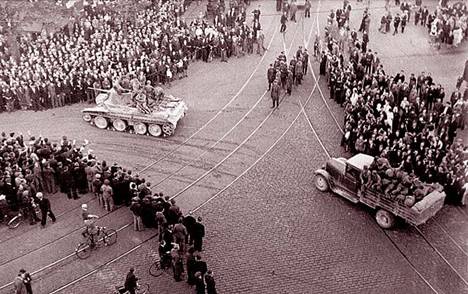
Red Army tanks enter Riga in1940.
Photo: wikipedia.org
On December 1 and 2, respectively, Lithuania’s and Estonia’s ministries of foreign affairs (MFAs) refuted the Russian MFA’s latest claims that the three Baltic States (Estonia, Latvia, and Lithuania) had voluntarily joined the Soviet Union in 1940.
Moscow’s claims in this regard are hardly new; but are being resurrected in the context of Russian-fanned tensions with the US and NATO over European security, and are presented with some new twists to the old arguments. In a radical historical innovation, Russia’s MFA statement further claims that the present-day Republic of Moldova is a Russian land (see below).
Lithuania and Estonia chose to reply in a low key. Lithuania’s MFA handed over a note to the Russian embassy in Vilnius, expressing
Read more:
http://www.jamestown.org/single/?no_cache=1&tx_ttnews[tt_news]=38747
- Bookmark :
- Digg
- del.icio.us
- Stumbleupon
- Redit it
- Posted by - (1) Comment
Why are beggars despised?
"A beggar, looked at realistically, is simply a businessman, getting his living"
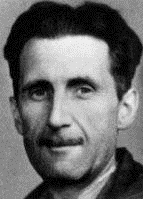
George Orwell (Eric Blair)
1903-1950
Best known for his novels Animal Farm (1945) and Nineteen Eighty-four (1949), George Orwell (pseudonym of Eric Arthur Blair) was one of the most notable political writers of his day. The following short piece has been drawn from Chapter 31 of Orwell's first book, Down and Out in Paris and London (1933), a semiautobiographical account of living in poverty in both cities. Though the word "beggars" is rarely heard nowadays, the "ordinary human beings" he describes are, of course, still with us.
By George Orwell
It is worth saying something about the social position of beggars, for when one has consorted with them, and found that they are ordinary human beings, one cannot help being struck by the curious attitude that society takes towards them. People seem to feel that there is some essential difference between beggars and ordinary "working" men. They are a race apart--outcasts, like criminals and prostitutes. Working men "work," beggars do not "work"; they are parasites, worthless in their very nature. It is taken for granted that a beggar does not "earn" his living, as a bricklayer or a literary critic "earns" his. He is a mere social excrescence, tolerated because we live in a humane age, but essentially despicable.
Yet if one looks closely one sees that there is noessential difference between a beggar's livelihood and that of numberless respectable people. Beggars do not work, it is said; but, then, what is work? A navvy works by swinging a pick. An accountant works by adding up figures. A beggar works by standing out of doors in all weathers and getting varicose veins, chronic bronchitis, etc. It is a trade like any other; quite useless, of course--but, then, many reputable trades are quite useless. And as a social type a beggar compares well with scores of others. He is honest compared with the sellers of most patent medicines, high-minded compared with a Sunday newspaper proprietor, amiable compared with a hire-purchase tout--in short, a parasite, but a fairly harmless parasite. He seldom extracts more than a bare living from the community, and, what should justify him according to our ethical ideas, he pays for it over and over in suffering. I do not think there is anything about a beggar that sets him in a different class from other people, or gives most modern men the right to despise him.
Then the question arises, Why are beggars despised?--for they are despised, universally. I believe it is for the simple reason that they fail to earn a decent living. In practice nobody cares whether work is useful or useless, productive or parasitic; the sole thing demanded is that it shall be profitable. In all the modem talk about energy, efficiency, social service and the rest of it, what meaning is there except "Get money, get it legally, and get a lot of it"? Money has become the grand test of virtue. By this test beggars fail, and for this they are despised. If one could earn even ten pounds a week at begging, it would become a respectable profession immediately. A beggar, looked at realistically, is simply a businessman, getting his living, like other businessmen, in the way that comes to hand. He has not, more than most modern people, sold his honor; he has merely made the mistake of choosing a trade at which it is impossible to grow rich.
(1933)
- Bookmark :
- Digg
- del.icio.us
- Stumbleupon
- Redit it
- Posted by - (0) Comment
A new Iron Wolf
howling over Vilnius
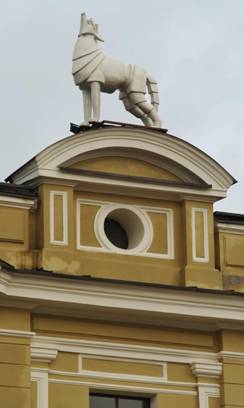
Vilnius’ new Iron Wolf, on top of a nicely renovated building within the Vilnius Railway Station area.
K.Slade/A.Myhre.
There is a legend that surrounds the founding of Vilnius in 1323. The legend has it that Grand Duke Gediminas went on a hunting trip in the holy woods of the Valley of Sventaragis. Tired after a successful day of hunting, the Grand Duke settled for the night near a hill at the convergence of the Neris and Vilnia rivers. He fell asleep soundly and had a dream. A huge iron wolf was standing on top of the hill and the sound of hundreds of other wolves inside it filled all the surrounding fields and woods. After the hunting trip, Gediminas went back to Trakai (the capital of Lithuania at that time) and consulted the pagan priest (oracle), Lizdeika, to reveal the secrets behind the dream. And the priest told him: “What is destined for the ruler and the state of Lithuania, let it be: The iron wolf means a formidable castle and town which will be established by the ruler on this site. The city will stand as strong as iron and its walls will protect the land from its enemies. The massive sound dwelled inside the wolf, symbolized the fame of the city shall echo beyond their borders and proclaim throughout the centuries the glory of Lithuania.” Gediminas heeded and pleased with the priest’s reveal of his dream. He begin to summon artisans and craftsmen around the country and Europe to design and construct his new strong and beautiful kingdom, which would surround this hill where he had the dream of the iron wolf. Upon the completion Gediminas moved his home, signaling the establishment of a new capital for his country: Vilnius.
- Bookmark :
- Digg
- del.icio.us
- Stumbleupon
- Redit it
- Posted by - (1) Comment

A future of green life and energy for Lithuania?
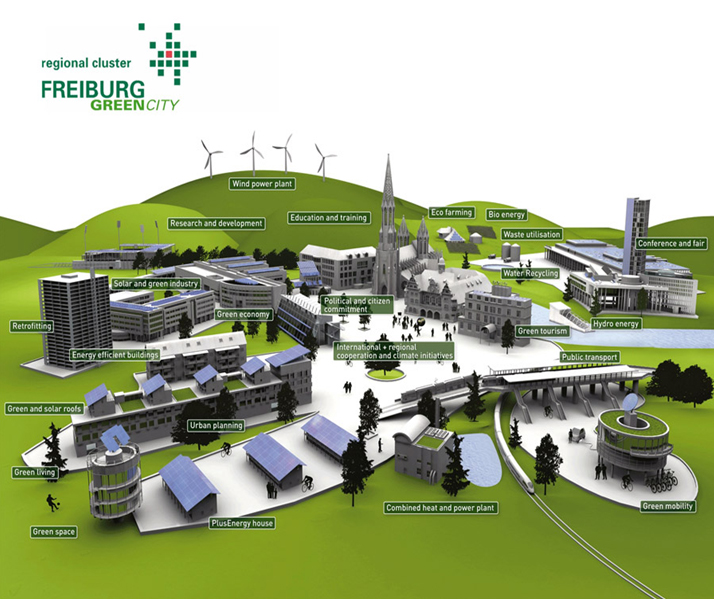
In the German city of Freiburg environment and economy are not antagonists. On the contrary, the environmental economy is the leading business sector in both town and region.
The town Freiburg in South-West Germany is the home of solar technology pioneers. The sunny university town has been writing solar success stories for more than 30 years. Maybe something similar could be done in Lithuania?
The view on one side of Freiburg takes you to Schlierberg; on the other, it stretches as far as the meadows and forests of Schönberg. On top of this long office and shop building in Merzhauserstrasse, solar architect Rolf Disch has built a number of penthouses. They aren’t normal penthouses. Barbara Schweer, who has now lived in one of the houses for two years with her husband Martin Hoyer and their daughter, produces some impressive energy figures: the family need less than 4,000 kilowatt hours a year for heating and hot water, which corresponds to the heating value of less than 400 litres of oil.
The heat is piped in from a nearby wood-fired power plant. “In the first year we only had heating costs of 300 euros,” says Schweer. That is really an achievement in a house with 167 square metres of living space. Optimal heat insulation is part of the recipe for success. Even on January days when temperatures fall to around freezing point, the house often doesn’t need any heating once the sun comes out from behind the clouds for a while. That’s because the south-facing glass façade captures the oblique winter sunlight, while later in the year the high summer sun is prevented from shining directly into the rooms – the house has been very intelligently designed. And the family all agree that the interior climate is ideal inside a building that contains large amounts of wood.
“Plus Energy House” is the name Architect Rolf Disch uses to describe the building, because over the year it produces more energy than its inhabitants consume. The solar electricity generating unit on the roof feeds nearly 9,000 kilowatt hours of electricity a year into the grid. If you deduct the family’s own electricity needs as well as the heating energy they use, you’re left with an annual surplus of some 2,000 kilowatt hours. That’s also well worth it financially: the monthly costs of just under 100 euros for electricity and heating are offset by income of almost 400 euros from the solar generator. Architect Disch speaks self-confidently of a “monthly energy income” and prophesies: “Additional costs for housing will eventually be transformed into additional income.” Disch has already built 47 of these plus energy houses at the foot of the Schlierberg in Freiburg – some as penthouses, some as terraced houses.
Not far away stands the Heliotrop – yet another innovation from Disch’s office. It is a revolving solar house that follows the sun, thereby enabling it to draw the maximum benefit from the incoming rays. It was the first plus energy house in Germany and is now one of Freiburg’s most frequently visited solar projects.
Freiburg really doesn’t have any shortage of solar innovations. They also include the solar factory. During the mid-1990s, when the future of the solar industry in Germany was still rather uncertain, Georg Salvamoser boldly founded a solar module factory in Freiburg and was able to celebrate the nationwide launch of a highly promising industry in February 1996. Although other German solar firms overtook it long ago in terms of size, Freiburg im Breisgau can still claim it was the pioneer – as is so often the case when innovations in the solar energy field are concerned.
The main pacesetter for Freiburg’s solar progress is the Fraunhofer Institute for Solar Energy Systems (ISE). With a total of over 500 employees and more than 18,000 square metres of offices, laboratories and test areas, the ISE is today the largest solar research institution in Europe. The Fraunhofer Institute is also so successful because the staff here steadfastly maintained their belief that solar energy would eventually make a breakthrough. The new institute building, which was only opened in autumn 2001, soon became too small again and some of the scientists and equipment have already moved to the neighbouring building and the Solar Info Center (SIC).
The SIC is another highlight of Solar City Freiburg: the modern building near Freiburg’s exhibition and conference centre is considered a nationwide competence centre for the solar industry. Its 14,000 square metres of space allow various firms to work together under one roof in a variety of different ways on the subjects of renewable energy, solar construction and energy-efficiency. The spectrum ranges from one-person firms with 20 square metres of office space to large, internationally renowned businesses.
One of these is Concentrix Solar, a company that was founded in 2005 as a spin-off from the ISE. Since February 2006, Good Energies, one of the leading strategic investors in the field of renewable energies, has held a stake in the young firm that produces concentrator power plants for sunny locations. An optical system consisting of Fresnel lenses, very thin lenses, concentrates the sunlight onto a small high-performance solar cell. These solar cells transform the light, which has been concentrated almost 500 times, directly into electrical energy. Using its Flatcon® technology, Concentrix was the first company to develop a terrestrial application for the high-efficiency solar cells that had previously only been used in space.
Today these solar cells already achieve excellent efficiency rates of 35%. “By using high-efficiency solar cells, the concentration of light and high precision in positioning the solar cells, Concentrix realizes module efficiency levels of more than 26%,” says CEO Hansjörg Lerchenmüller. Compared to conventional silicon technology, Concentrix has been able to almost double the all-important module efficiency. Concentrix is now regarded nationwide as a highly innovative solar specialist – and a solar success story. Only recently, at the beginning of 2008, the company was honoured with the Innovation Award of the German Economy. The new modules will now also be produced in Freiburg from the middle of 2008, which is considered a success for the solar city, because other regions had made strong attempts to attract the innovative solar specialists from Freiburg.
Yet this is by no means the end of the list of Freiburg’s solar projects. For example, no other German city is more committed to advancing solar climatization, and Freiburg offers not one, but two pilot projects in this area: at the Chamber of Industry and Commerce (IHK) building and the university hospital. Furthermore, for many years now Freiburg with its 200,000 inhabitants has been at the top of the “Solarbundesliga”, the ranking of solar energy use in German towns and cities.
Although in the harsh reality of professional soccer SC Freiburg may only play in the second division, even in its struggle for goals and points it fulfills its solar obligations. Some 2,200 square metres of photovoltaic cells on the roof of the Dreisam Stadium generate roughly two million kilowatt hours of solar electricity a year. In combination with the environmentally friendly Stirling engines that form part of its heating strategy, SC Freiburg generates more than half of its entire electricity needs itself – emission-free.
Why has solar energy developed in such an exemplary way in Freiburg? Why are there so many innovative solar projects here? Perhaps because the city is located in one of Germany’s sunniest regions. Perhaps also because solar energy has always been linked in Freiburg with the image of “green”, ecological quality of life. Most probably, however, the main impetus came from events that occurred over three decades ago: in the 1970s there were plans to build a nuclear power station before the gates of Freiburg in Wyhl on the Kaiserstuhl. But the people of the region opposed it and thousands of them occupied the construction site in February 1975. Eventually they were able to prevent the building of the reactor after years of political campaigning.
However, the campaigners did not stop at protest, they also developed ecological alternatives. Only a year after the occupation of the construction site, a first solar energy fair was held in the nearby wine-growing municipality of Breisach. That represented the birth of Solar City Freiburg. Today more than 10,000 people in Freiburg work in the environmental and solar sectors explains Bernd Dallmann, Freiburg’s economic development specialist, who is still working hard to enhance the city’s green image. In fact, a few weeks ago, Freiburg decided to call itself a “Green City” – bright prospects indeed for the solar city at the foot of the Black Forest.
Based on an article by Bernward Janzing,
http://www.magazin-deutschland.de
- Bookmark :
- Digg
- del.icio.us
- Stumbleupon
- Redit it
The land of smiles
- Posted by - (2) Comment

My youngest daughter, then three-year-old Cornelia, with granddad Bruno.
I think people on mother Earth has bright times to look forward to;
times when the world will be managed and developed by the
new type of people, those who are now growing up.
Photo: Aage Myhre.
By Aage Myhre
aage.myhre@VilNews.com
The economic downturn has made more and more ‘experts’ come forward with gloomy predictions for the world's future.
I do not share this pessimistic attitude. I think the crisis is part of a necessary cleansing process. In this way, we live in a very exciting time. The very ‘transition time’.
I think the world’s money power and capitalism as it has been exercised is bad and unfair in many ways. I am skeptical also about many of the other 'isms'. In my opinion, greed and desire for power have defined the various 'isms' and the world for far too long.
Many of the problems they have created have been nurtured by unhealthy egoism. Money has become our god, a deceitful god. Therefore, many countries are struggling today. Many innocent people suffer as a result thereof.
Yet I am optimistic. For I see that a whole new type of people is coming. New leaders. Many of today's children and young people. What I see is forward-looking youngsters with good balance within themselves and their 'other dimension'; their divine origin.
‘The land of smiles’ is under development. The new kids, the new human type, seem to have come to Earth with a special mission: to assist the Earth and its inhabitants in the transition and the 'rebirth' as a planet with higher awareness and better interpersonal understanding.
I feel that these children already understand that today's materialism is not the answer. Some of them seem to have access to gifts of clairvoyance and communication at higher levels.
These children are born with a high degree of natural intelligence, sensitivity and vision. They are creative, and often have easy access to both the left and right brain halves, making them artistically gifted, but also technologically competent and adventurous. As if they represent the universal consciousness.
A very significant aspect of this evolutionary development is that new-people do not keep their abilities and qualities for themselves. It is as if they have come to the planet to share their innate wisdom with others.
I believe that they, by their very presence, will help a lot to experience and understand these new 'vibrations' and thus open up more of their own abilities and potential.
One of the gifts the ‘new-people’ seem to bring with them during this transitional period, is that even today’s people become more aware of who they really are. The inner, the spiritual is already becoming more apparent.
So far in human history, it appears that our physical forms have locked us inside ourselves. The much finer vibrations of higher dimensions have somehow never been let out in free expression. It has always been a gap, a wall, between the material manifestation of the human body and the higher consciousness we all have inside us.
Now a new state, new openness, a new freedom is on its way. In the new situation, many will gain easier access to both material and spiritual 'realms'. It will no longer be as great a need for meditation or concentration, since access to the spirit world is becoming so much more open.
Fear, anxiety, aggression, envy, slander, arrogance, greed and distrust as we know them in today's society will slowly fade away. They will no longer plague mankind.
The new folks will fully understand and be very conscious of own strength and creativity. On who they are. They will be aware that they are different from present days’ people. They will also be confident in themselves, without being haughty or arrogant.
In the first phase of the transformation period, they will increasingly be exposed to insult and aggression from the old folks, but that would worry them little. They are very conscious of where they come from and what mission they have in the creation of the new world.

Dalai Lama's words above describe well our today’s problem. Our lives revolve around money. We do not have the time for or understanding of ourselves and our loved ones. We are not aware of who we are. And because of this lack of awareness, we, the people, have created a planet of sorrow, suffering and stress.
The constant pursuit of money does not let individuals to prioritize their own thoughts, feelings and actions. Fear of not surviving due to lack of resources has led to greed and imbalances. There is much that must be corrected if we are to make a planet where all people are satisfied and happy. But it seems that more and more feel and understand this now.
The new generation of people will find solutions to problems in a whole new way. Our days’ tendency to think in tunnels will be replaced by free thoughts, more creativity. Monetary systems will be replaced by more equitable earnings and distribution models. Greed cultures will evaporate.
Our time’s great advances in information technology have made it incredibly easy to collect and acquire knowledge. The new time will clearly demonstrate how all of this information can best be applied to the progress of humanity. Knowledge will no longer be enough, now it’s time for implementation and action.
The future will be integral. Brain halves and the human spirit will play together as never before. Individuals will find it easier to find their places in a larger whole. New plans will be developed in accordance with the holistic view lines. Two plus two is more than four in the right context.
Within my field, architecture, the new architects and site planners will far better understand that all elements must play together holistically. The new communities being developed will follow the old days of village thinking. It will be developed neighborhoods where people take care of each other. The workplace, school, residential, cultural and recreational activities will be located near each other. Segregation will be replaced by multifunctional communities. Cars will largely be redundant.
Experts from the present, past, will at first have difficulty understanding what is happening. But they will soon see that the old models no longer work. New people will take over their positions, but in an integral, non-selfish way.
Humanity has much wisdom to look forward to in the land of smiles. I think.
All truth passes through three stages. First, it is ridiculed. Second, it is violently opposed. Third, it is accepted as being self-evident.
- Arthur Schopenhauer, Germantown philosopher (1788 - 1860).
- Bookmark :
- Digg
- del.icio.us
- Stumbleupon
- Redit it
- Posted by - (0) Comment
NEW YORK TIMES:
Vilnius among the 10
hippest world cities!
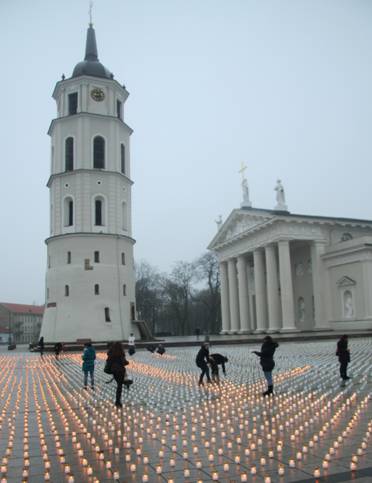
Vilnius early this morning, Sunday 20 November 2011.
Youngsters lighting candles at the Cathedral
to mourn people killed in traffic accidences.
Photo: Aage Myhre
“Hip cities that think about how they work. The story of young people, full of ambition, energy, skill and talent, moving to enticing cities that call to them like a siren’s song is as old as modern civilization. And in a world where national borders are easier to traverse, where more countries are joining the prosperous global middle class and where the cost of a one-way plane ticket is more affordable, young professionals probably have more cities to choose from than ever before.”
This is how New York Times this week introduces its article about what they consider the 10 hippest cities in the world. Vilnius being one of them.
Click here to read the New York Times article
![]()
“The corrupt neoliberal mayor of Vilnius managed to brainwash even New York Times”
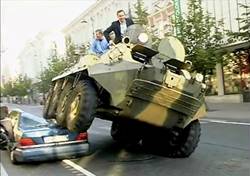
Vilnius Mayor, Arturas Zuokas crushing
an illegally parked car with an armed
vehicle from the Lithuanian army.
Not everyone is impressed by the New York Times’ selection of Vilnius among the top ten hip cities in the world. Here are two comments from Facebook this morning:
1) “My dislike for Vilnius aside, this kind of publicity is very important and would be valuable, if only different aspects were stressed and many of the statements weren't propaganda”
2) “Oh come on, this Zuokas' neoliberalism is way overrated while his public relations drive is closer to idiocy than propaganda. I happened to get in touch with some of his apparatchiks with the city hall's PR and press offices; I'm telling you, they could barely qualify to work for a kolkhoz. The dude is very funny for an ex-convict though, a good journalistic back scratch.”
![]()
Here is MY Vilnius – of today:

Aage Myhre,
Editor-in-Chief.
I took to the streets of Vilnius early today morning, Sunday 20 November.
It was a mysterious, misty morning, excellent for photographing. If you want to see a slide show of my early morning impressions, simply click on one of the below images:
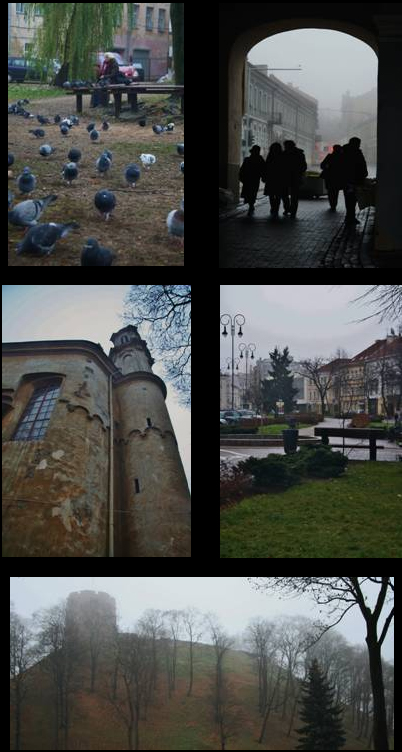
Click here to see my misty early Sunday morning slide show.
- Bookmark :
- Digg
- del.icio.us
- Stumbleupon
- Redit it
- Posted by - (1) Comment
1st of November is
All Saints’ Day
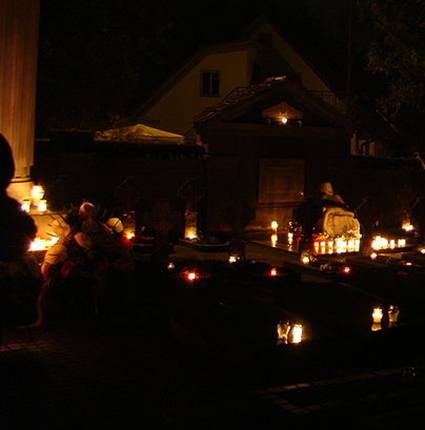
November 1st, people of the Christian Faith all over the world celebrate All Saints’ Day. In Lithuania it is one of the most solemn of holidays. This day is set aside as a day to honor the souls of family members that have passed away as well as remembering the Saints of the Catholic Church.

November 1st, people of the Christian Faith all over the world celebrate All Saints’ Day. In Lithuania it is one of the most solemn of holidays. This day is set aside as a day to honor the souls of family members that have passed away as well as remembering the Saints of the Catholic Church.
While in modern times, this day involves visits to cemeteries to decorate graves, attending Church and get togethers with family, the meaning of this day and some of its traditions go back to ancient times and it is interesting to see how some of these ancient traditions have intertwined with the traditions of the Christian Faith in Lithuania today. To this day, you will still hear most Lithuanians refer to All Saints’ Day as “Vėlinės” which was a holiday going back to pagan times that celebrated the souls of dead ancestors with feasts and special rituals. History is not exactly clear about this but it is known that the feasting and rituals did not take place on one specific day but rather continued over the course of a number of weeks. In ancient writings this ritual is called " Ilgės" - pangs of love or longings. The name comes from the fact that this ritual went on for a long time - long ritual. In Eastern Lithuania, this ritual was called " Dziedu" days, old men's days. This name was related to beggars who were asked to pray for the souls of the dead.
The ritual traditions of the dead were and still are today directly related to peoples' belief that on this day the souls of the dead return to earth to Churches, cemeteries or their homes. The most ancient belief is that they returned to their homes. Therefore the souls of the dead were and still are graciously received and treated according to rituals of our ancestors. In the 1500s some of the practices began to change to more of what is common these days. Now it became common for people to gather in cemeteries, where people would pray for the deceased and comment to each other about all the good qualities of the departed person. Afterwards a bountiful supper would be prepared for all to enjoy. Now when it is said “for all to enjoy” it is meant ALL – including the departed. This is based on the belief that “the soul of the dead cannot rest if the table is not set”. In the Žemaitija region of Lithuania there is this traditional prayer that is given by the father of the house.
“Dear souls of the dead, you are still remembered by the members of my family, you are most worthy of our perpetual remembrance, especially you, my grandparents, my parents, also our relatives, children and everyone whom death took away from our home. I invite you to this annual feast. We wish that this feast is agreeable to you, just like memory of all of you, is to us”
After a short silence, the father asks everyone to sit at the table and the food is eaten in silence.
Another practice was that on the eve of All Saints’ Day tables would be set with food in the evening, in rooms with doors and windows ajar to allow the souls of the dead, easy entry. Also, soft beds were prepared with white bed linen for the anticipated guests. Blessed candles were then placed and lit on either side of the pillow and the family knelt near the bed awaiting the arrival of the soul of their dead family member. If they heard cracking in ceilings or floors, this meant that the dead souls had arrived.

Even as late as the early 1900s, in some parts of Lithuania, an assortment of food was brought to cemeteries and left there. Upon returning home from the cemetery a dinner of seven different foods of meat, grains and eggs was prepared and the table was set in a room with windows and doors open wide to allow the souls to enter as it was believed that the souls of the dead partook of the meal together with the living members. No one sat at the corner of the table as this spot was reserved for the souls of the departed. An assortment of food was also placed on that corner of the table and then everyone began to eat.
In Lithuania, the belief that souls of the dead come for a visit during All Saints’ Day has lasted to this day. The traditions of honoring the dead that are practiced today began in the mid 1800s. The most common practices are joint visits to cemeteries, decorating of graves, lighting of candles and prayers. So Monday 1 November I will do what millions of Lithuanians will do around the world - honor my ancestors. The day will start by me driving around to different homes in Vilnius to pick up some of my relatives that no longer drive. We will make the forty five minute drive from Vilnius to Guronys which is the ancestral home of my grandfather’s family Karnila and my grandmother’s family Petkevičius. As always, we will go to the two “old cemeteries” first. Here will be the meeting point for other members of the family since on this day, the same as with so many Lithuanian families, we have family members from near and far traveling to our ancestral home.
The oldest of the two “old cemeteries” in Guronys is where my great grand father Vincentas and my great grandmother Kristina are buried. I actually go to this cemetery quite often in the course of a year’s time. When ever I am driving through the area I’ll stop by for “a visit”. I think you can understand that it gives me a very warm feeling inside to be at the final resting place of my ancestors especially when I can look three hundred meters away and see the spot where their house once stood. I don’t mind telling you though that when I “visit” Vincentas and Kristina on All Saints’ Day there is very much a different feeling. On this day, you get this very strong feeling that they are there with you and they can feel your feelings and hear your thoughts. Now I’m sure that among our dear readers there are those in the scientific and medical fields that could very aptly explain these feelings. Sincerely I can tell you that I would like hear these explanations. Please don’t be offended though when I ask that on this day, All Saints’ Day, don’t give me the scientific explanation for these feelings. On this day I’m having too much fun “visiting” with my ancestors.
From one cemetery to another and another, candles will be lit, prayers will be given, gravesites will be decorated and at the grave of each person we will stand and talk about their fine qualities and the things they accomplished in their life, the same as has been done for hundreds and hundreds of years. The visits to one cemetery to another is not only for the members of the Karnila and Petkevičius families. This also includes visiting the graves of the wive‘s and husband‘s families as well so all and all it‘s an all day affair.

Once we have visited and paid our respects to all the departed most of the group, this is usually six to eight carloads of people, will gather at the home of one of the families that live near by. Here we will go inside and socialise and enjoy a wonderful meal. Of course, it goes with out saying that at one corner of the table a place will be set with a plate, silver ware and drinking glass and no one will begin eating until food has been placed on and near this plate and drink has been poured into the glass. After all, this day is for our ancestors and it would be impolite to start eating before they are served at the table.
The drive home is very pleasant. There is much conversation about the family. Its history, notable events, hardships that were borne, accomplishments and joyous occasions. During the drive home you also behold a very glorious sight. The sun has set, it is dark and all along the way you drive by cemetery after cemetery that are all aglow with the candles placed their by the cemetery’s inhabitant’s loved ones. This is truly a magnificent and heart warming sight to experience. Probably the most pleasant experience of the drive home is the feeling you have inside you. You have spent the day with family. Not just the family members that had traveled from near and far to pay their respects, but you have spent the day with your ancestors and departed loved ones. I think you would all agree that to spend the day with your ancestors is always a wonderful experience and one which leaves you with a warm feeling in your heart.
Su pagarbe
Vincas Karnila,
Associate Editor
The origins of All Saints’ Day go back to ancient times as do also some of the beliefs. While some would say that these “beliefs” are basically superstitions, to this day there are many people that still believe in many of them. I thought you may find interesting some of the beliefs that are held by some people in Lithuania to this day. While one may believe none of them, another in only a few another person may believe in many.
The beliefs of All Saints' Day are:
1- On the day of All Saints, the souls of the dead come to visit the living, asking that the living pray for them.
2 - Before All Saints' Day, a homemaker will sweep the house and sprinkle the floors with sand. In the morning, if she sees the floor covered with small footprints, but there are no small children in the house she would believe that souls of dead children had come into the house.
3 - If a mother goes to the cemetery at midnight on All Saints' Day, she will see her dead children.
4 - On All Saints' Day, churches are filled with souls of the dead. That day, the souls are not burning in hell. They are happy. However some souls, whose mothers are wailing, arrive wet, soaked by earthly tears. Moral of the story - No need to cry for the dead.
5 - On the Eve of All Saints' Day, one does not go visiting or walking through villages because all roads and the country side are filled with souls of the dead. There can also be some mean souls.
6 - On All Saints' Day and in the evening no ashes or garbage should be taken out because the souls can be witched by these items.
7 - If it rains on the night of All Saints' Day, there will be numerous deaths the following year.
8 - If the sun does not shine on All Saints' Day, the following year will be filled with misfortunes.
9 - If on All Saints' Day, trees are still fully covered with leaves, it will be a year of black death.
10 - If a child is born on the eve of All Saints' Day, when in life they attend a funeral meal, they will see evil souls.

- Bookmark :
- Digg
- del.icio.us
- Stumbleupon
- Redit it
- Posted by - (2) Comment
OIL, GAS AND NOW POTENTIALLY 3 NEW
NUCLEAR PLANTS IN THE BALTIC AREA:
Ticking time bombs?

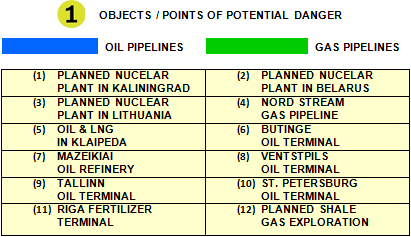
Text: Aage Myhre, Editor-in-Chief
aage.myhre@VilNews.com
It surprises me that the warning bells are not ringing much louder in Scandinavia and the rest of northern Europe, as I presume it now must be well known what is going on here in the Baltic region with regards to old as well as new energy installations, and potential disasters connected to them. Oil, gas and polluting elements from World War II and later have long been known concern factors. Now the situation has become further worrying by the fact that Russia has built an underwater gas pipeline from St. Petersburg to Germany, and not least that it is planned no less than three (!) new nuclear power stations very close to the Baltic Sea's southern shore.
We all remember Chernobyl 25 years ago. We all remember the terrible disasters in Japan earlier this year, in a nation that claimed to have the world’s safest nuclear installations – a claim that showed yet again that nuclear plants will never be safe enough. They are always ticking time bombs.
For the whole time nuclear plants operate they emit radiation to their surroundings, often causing illness and genetic damage to humans, animals and nature. No nuclear installation, wherever it was, has ever been really safe.
I can hardly imagine living in Vilnius any more if that means I will have to live surrounded by three nuclear plants, just kilometres away. In particular, I would be extremely worried about my children and their descendants. Living in a neighbourhood of nuclear reactors is simply not a chance I can take.
Can Europe accept that three nuclear power stations are built right here, at its very ‘epicentre’?

Nuclear technology is a high-risk technology
|
|
A new nuclear power plant, due to be located at Visaginas in eastern Lithuania, has been in the pipeline for several years. Construction costs are expected to be at least three to five billion euros (4.5 to 7.4 billion dollars). |
Human mistakes, natural disasters, material fatigue – nuclear technology is a high-risk technology, on top of which comes the danger emanating from radioactive waste that has to be safely disposed of for a million years. The only thing that is certain is that nothing is safe, which is why I think the plans in Lithuania, Belarus and Kaliningrad should be reconsidered immediately.
A recent report from the U.S. ‘Union of Concerned Scientists’, based on data from the federal Nuclear Regulatory Commission (NRC), contains troubling news also about the state of America’s vast network of nuclear power plants.
The report, which examined serious incidents at 14 U.S. nuclear power plants from New York to California in 2010, found fault with both plant operators and the Nuclear Regulatory Commission which is supposed to oversee them.
“Many of these significant events occurred because reactor owners and even the NRC tolerated known safety problems,” the report stated.
While none of the 14 safety incidents tagged in the Union’s report as ‘near misses’ produced harm to nuclear plant employees or the public, the report terms the frequency of these incidents, which averaged more than one per month, ‘high for a mature industry’.
Nuclear waste

Another fear I have, is that there in Kaliningrad, Belarus and potentially other Baltic regions are a lot of nuclear remains after the Cold War period.
"We are sitting on a powder keg with a fuse that is burning, but we don't know how long that fuse is," said Alexander Nikitin, a former Russian navy officer, now an environmental activist who first revealed the existence of the dump at Andreeva Bay, on the Kola peninsula of north-western Russia.
The nightmare scenario, identified by Russia's Federal Nuclear Agency, raises new fears that Moscow is failing to properly manage the potentially deadly nuclear legacy of the Cold War, which has left the country with tonnes of plutonium and uranium and millions of tonnes of nuclear waste to deal with. That is for Kola, but I am afraid there also here in the Baltic area exist a number of unknown ‘powder kegs’ from those days.
Baltic Sea oil spill may be inevitable

It is well known that the Baltic Sea has a severe water pollution problem. Nations surrounding the sea have been dumping untreated human waste, toxic materials, and metal into the sea since WWII. Countries from the former Soviet Union and the Eastern Bloc gave little regard to the possible damage done from this dumping. Specific waste being dumped into the sea includes factory waste being deposited directly into the sea or rivers which feed directly into the sea. The environmental pollution in the Baltic Sea can cause irreversible damage to the sea which is an important economical and recreational source for 80 million people around its waters.
“Regarding the Baltic Sea, the question should be asked not whether an ecological incident will ever happen [there], but rather when it will happen. Therefore, we all have to get ready for it.” This said Magnus von Schenck, manager of the Swedish project ‘Baltic Master II’, at a conference in Budapest earlier this year.
And he continued: “All Baltic States should prepare special plans aimed at dealing with seemingly inevitable ecological incidents in the Baltic Sea.” He stressed that the Baltic Sea has one of the world’s busiest cargo ship, including oil-transporting tanker traffic. According to the World Nature Fund, crude oil and oil products export volumes have doubled over nearly 15 years in the Baltic Sea, reaching 160 million tons in 2011.
“The Baltic Sea is particularly susceptible to ecological dangers, as it is a closed sea – its waters change slowly. Statistically, yearly we register 120-150 various accidents related to oil spills in the sea, resulting in spills of several hundreds tons of oil products, which makes the sea particularly vulnerable compared with other seas,” Schenck pointed out, according to The Baltic Times.
Potential environmental disasters in Klaipeda, with both LNG and oil terminal in the city?

There are currently 235 liquefied natural gas (LNG) tankers in operation worldwide. New LNG tankers have an average capacity of three billion cubic feet, costing approximately EUR 180 million each. LNG tankers differ from traditional oil tankers in that their cargo, liquefied natural gas, must be cooled to extremely low temperatures (-160°C) and has slightly different characteristics than oil (including a higher propensity to burn). LNG tankers might be dangerous for environments and communities claims a new movie and web page: http://timrileylaw.com/LNG_TANKERS.htm
The Kiaules Nugara (Pig’s back) island in the southern part of the Klaipeda port area, at the border between the port and the Curonian Lagoon is the most likely place to build Lithuania’s planned LNG (Liquid Natural Gas) terminal. This means that it will regularly sail large LNG tankers through the narrow strait between Klaipeda city and Neringa (which is now designated as one of the Lithuania’s national parks). How risky can it be to get a gas terminal and such a heavy sea traffic close to the big city that Klaipeda after all is? What about the explosion and fire risk? What about emissions and other forms of pollution? Is the water, beaches and fisheries in the Curonian Lagoon at risk? May Neringa and Klaipeda city be at risk?
Riga Fertilizer Terminal - a ticking time bomb

BNN (Baltic News Service):
On July 26, 2011, Riga City Council approved establishment of a port terminal «Riga fertilizer terminal» on the island of Kundzinsala for handling and storing mineral fertilizers. Of the terminal’s capacity – 2 million tons per year, ammonium nitrate of all kinds will make up 52% or 1.05 million tons of cargo.
Ammonium nitrate, an extremely explosive and fire hazardous product, is widely used for terrorist purposes. It was also used by terrorists for the bombings in the United States, Britain, Spain, Norway, Turkey, Afghanistan, India, Middle East, Russia and other countries. It is exactly for this reason why many states have taken drastic measures to limit the amount of ammonium nitrate located in their territory. For example, Ireland, China, Colombia, Uzbekistan, Afghanistan, and the Philippines have banned using ammonium nitrate in agriculture.
However, the Riga City Council has agreed to build a terminal for handling and storing ammonium nitrate near terminals operating with petroleum products and liquefied gas. This implies about 4,000 tons of ammonium nitrate will travel by rail via the center of the capital of Latvia each day. It is impossible to guarantee safe transport of these hazardous chemicals along the entire route.
Furthermore, according to the decision of the Riga City Council, «Riga fertilizer terminal» is allowed to store 90,000 tonnes of all kinds of ammonium nitrate. No port in the entire world is allowed to store more than 5 000 tons of this product.
Initiators of the project have been using the mass media to claim that the project is going to be highly beneficial for the city. Moreover, the permission was backed by the conclusion of the State Environmental Supervision Office that the terminal will not be dangerous for the environment or the health and life of Riga residents.
Independent experts in the field of ports operations, environmental protection, life safety and terrorism express reasonable doubt on the integrity and objectivity of the Riga City Council decision. Experts give strong arguments why various stages of «Riga fertilizer terminal» construction project agreement lack transparency and formal public debate. The company has misled about the exceptional economic benefit to the city and the matter of the country handling and storing ammonium nitrate is highly questionable. Most importantly, the project conceals what mortal danger it poses to the inhabitants of Riga.
If people do not pay close attention to this disastrous decision taken on July 26, 2011, by Riga City Council, the capital of Latvia will turn into a ticking time bomb.
Shale gas: Energy security laced with possible ecological calamity

Poland and Lithuania are these days about to make their first moves towards exploration and production of shale gas. How dangerous may such exploration and production be?
Here is what http://www.lloyds.com wrote about shale gas in March 2011:
With the world’s rapid consumption of its finite fossil fuels – and the environmental effect this is having – causing growing alarm, the discovery of vast deposits of cleaner natural gas has been hailed as a potential “energy saviour”.
But the method of reaching this hard-to-extract resource has prompted accusations it damages health and the ecology, prompting a US Government investigation into whether the process is safe.
It has long been known that enormous pools of natural gas are locked in underground rock formations, particularly shale. But with plentiful supplies of oil, gas and coal available it was largely ignored. However, dire warnings about the limited remaining stocks of these fuels and the environmental harm they cause have prompted a rethink.
The shale gas supplies are estimated to be so large that they could satisfy America’s gas needs for the next century. The shale gas boom in America, where it is already providing 10% of the nation’s gas, has led to exploration in China, India, Australia, Indonesia and Europe. The first exploratory well was dug in the UK at the start of this year.
There is enough existing conventional gas to last the world for another 60 years, says the International Energy Agency. But by adding in “unconventional” sources, such as shale gas, reserves could last another 250 years, although it stresses this estimate is very uncertain.
As natural gas has only half the carbon emissions of coal, shale gas could also help in the fight against climate change, by providing a bridge between polluting oil and gas and new renewable energy sources.
Environmental worries
But there are growing concerns that developing these gas reservoirs may cause serious environmental harm. That is because the shale gas boom has been enabled by a technique called hydraulic fracturing, or “fracking”. It involves pumping huge volumes of water, sand and chemicals at high pressures deep underground to break up rock formations and allow the gas to escape into wells from where it can be piped to the surface. Most of the brew of water and cocktails used to extract the gas stays far beneath the earth, however, with uncertain long-term consequences. Campaigners are calling for the technique to be halted until further research can be carried out.
In America, where there are now around 35,000 shale gas wells, there are growing protests over fracking. There have been cases of blowouts and gas leaks while hundreds of residents living close to gas wells in Texas, Wyoming and Pennsylvania have complained the cocktail of chemicals used in the drilling process has polluted their groundwater, causing many illnesses, while farmers blame poisoned well water for deaths and deformities among their cattle.
Energy companies deny that fracking is to blame for contaminated water. The technique has been used for decades but has only become widespread recently since shale gas has been seen as a viable alternative to oil and coal. The drilling companies are exempt from legislation on clean water so can keep the chemicals they use a closely guarded secret.
Action being taken
The US Congress has responded by directing the Environmental Protection Agency (EPA) to study the effects of fracking. In February, the EPA issued a draft plan outlining how it will investigate the issue, including proposals to take water samples from sites before, during and after fracking has taken place. The EPA expects to publish its initial report by the end of 2012, with a further in-depth study due two years later.
But some cities have pre-empted the EPA investigation and taken unilateral action. The cities of Pittsburgh, Pennsylvania and Buffalo in New York have already chosen to ban fracking in their regions. Others have called for a moratorium on the process until more is known about its potential consequences.
Investors have also raised concerns. In 2010, 12 energy firms, including Exxon Mobil, faced shareholder resolutions at their annual meetings calling for them to introduce better safeguards against environmental damage caused by fracking.
Some critics argue the rush to develop shale gas is diverting attention away from the need to find new, clean energy supplies. In January, the Tyndall Centre – a respected climate thinktank – published a report warning of the dangers of developing shale gas. The gas would not be used to substitute coal but, instead, is likely to be used as well as coal to meet the growing demand for energy, it said. Without a tough cap on greenhouse gases, shale gas exploitation could result in an increase – not a decrease – in overall carbon emissions.
Its image as an energy saviour is also likely to sap investment in renewable energy sources, the report added. The Tyndall Centre concluded that the UK and Europe should halt shale gas development until more evidence is gathered in America about the potential harm fracking can cause.
- Bookmark :
- Digg
- del.icio.us
- Stumbleupon
- Redit it
- Posted by - (1) Comment
Russia has ambitions
few in the west
are aware of

Vladimir Putin and Gerhard Schröder.
Photo: Wikipedia.org.
Text: Aage Myhre
Editor-in-Chief
aage.myhre@vilnews.com
Professor Vytautas Landsbergis continuously warns his country and the world about the Russian threat. I think these warnings sometimes are a bit excessive, but I’m also afraid that Western Europe will continue acting and thinking with their blinders and ear flaps on. Yeltsin's Russia was perhaps more or less loose tooth, but Putin's Russia is definitely not! And Putin has ambitions. Big ambitions. I have learned this over my years in his front yard. It surprises me constantly to see how little Western leaders worry.
Putin has publicly stated that the dissolution of the Soviet Union was the most tragic has happened in Russia's history. It is an attitude not only Eastern Europe should be scared of. Western Europe and the rest of the world will also be greatly influenced if Putin gets what he wants.
Energy is the weapon. This applies not least to gas, which the rest of Europe is highly dependent on. The state-owned Russian gas company Gazprom is Putin's main tool in the efforts to achieve more and more control in Europe. It is often through this company that many spies and agents are paid.
Baltic states are particularly vulnerable. These relatively poor countries are already paying 50% more for gas received from Russia than Germany does. And every time they do something to achieve independence from Russian supplies of gas, oil or electricity, Putin is ready with the finger on the switch. Ready to turn off the power, once again to make a blow to the Baltic States. Unfortunately, he has more than enough power to threaten and trump through most of the restrictions.
I put big question marks at Germany's former chancellor, Gerhard Schröder, for his roles in his native country and for Europe. Schröder cultivated very close ties to Putin, even as Chancellor, ostensibly to strengthen the "strategic partnership" between Berlin and Moscow.
Together they planned the now realized gas pipeline under the Baltic Sea, exclusively between Russia and Germany. Only a few days before he resigned as Chancellor Schröder signed the agreement without consulting with his EU counterparts, and immediately after his retirement he joined the board of the German-Russian joint venture.
Schröder was criticized in the media, and later by Germany's new chancellor, Angela Merkel, when he called Putin
a "flawless democrat 'on 22 November 2004. His so-called objectivity of years as chancellor may well be questioned.
In his memoirs' Entscheidungen: Mein Leben in der Politik ' Schröder defends his friend and ally, Vladimir Putin, saying that' it would be wrong to place excessive demands on Russia in terms of domestic political reform and democratic development, or to condemn Russia solely on basis of the Chechnya conflict '. Well ...
Schroeder has also criticized some European countries' rapid decision to recognize Kosovo as an independent state after the independence declaration in February 2008. He believes the decision was taken under strong pressure from the U.S. government, and has caused several problems, including weakening of the so-called pro-European powers in Serbia. In August 2008, Schroeder blamed the war between South Ossetia and Georgia entirely on Mikhail Saakashvili and 'the West'.
The former chancellor still refuses to criticize any aspect of Russian politics. His office in Moscow is probably too good to be left. Then rather forget some moral principles.
Gas is crucially important for continental Europe. Even a brief interruption in supplies do often get very serious consequences. People freeze to death. Radiators and kitchen stoves are left cold. Companies are forced to stop their production.
Russia is increasing its grip on oil and gas, Europe's economic lifeblood. Moscow is working out of a comprehensive strategies aiming to increase Europe's political and economic dependence on Russian energy.
Such dependence can negatively affect transatlantic relations, common values, goals, strategic objectives and security policies. Without dialogue and coordination between Washington and European capitals, Europe's strategic plans are driven away from the United States unabated. It is consistent with Putin's plans.
Norway is an important alternative gas supplier to the European market. Therefore, for Putin and Medvedev, it is important to have good relations with Norway, among other things, to show 'courtesy' about sharing the lines in the Barents Sea and potential Norwegian participation in exploration and production of gas and oil on Russian territory.
Hopefully, Norway and Europe will understand the picture in time.

A new, disturbing aspect is that Russia now has plans to build two nuclear power plants in the Baltic States, one in the Russian enclave of Kaliningrad, and another as a joint Russian-Belarusian project in Belarus near the Lithuanian border. Europe needs more energy, but with Chernobyl and Soviet history with nuclear power plants and nuclear waste in mind, one can ask whether two new plants at the very threshold of Northern Europe and Scandinavia is desirable.
I call for clearer information and a more open debate.
- Bookmark :
- Digg
- del.icio.us
- Stumbleupon
- Redit it
- Posted by - (2) Comment
Lithuania’s friends and brothers

Soviet propaganda poster during the winter
war with Finland, 1939-1940.
From Wikipedia.org.
“Do you know how we Fins look upon the Russians as brothers or friends?” A Finnish friend of mine asked, and soon he revealed the answer: “We consider them our brothers, of course, because friends you can choose yourself.”
Lithuania of today is facing the problem Finland has had to deal with for many decades, and is now learning the art of keeping close ties to the West without irritating Russia too much. But Lithuania has got many more “friendship dimensions” to tackle; to keep up the mood towards the EU and to balance its relations between America and Western Europe.
Many would even say that it is questionable who are the real friends of Lithuania within Lithuania itself, or as a columnist recently wrote on this issue: “All these scandals and infights among politicians are no more than battles of personal interests which have very little if anything to do with interests of the nation.”
But first back to Russia, where a recent poll gives quite interesting information on how ordinary Russians view the relations with other countries. According to the poll, Russia's best friends are Belarus (47 percent), Kazakhstan (33 percent), China (24 percent), Germany (22 percent) and India (15 percent).
Russia's main foes are Latvia (46 percent), Georgia (44 percent), Lithuania (42 percent), the United States (37 percent), Estonia (28 per cent) and Ukraine (27 percent).
Lithuania is, in other words, considered one of Russia‘s top foes.
As for Russo-US relations, Russia has the last 20 years been happy to have had relatively good ties with Uncle Sam. However, Putin's and Medvedev’s version of democracy is regarded by the United States as a slide towards totalitarianism.
Simultaneously, Russia is trying to improve its ‘security situations’. Around its eastern regions this is being done by establishing and strengthening a number of bilateral and multilateral partnerships, including strengthening Russo-Chinese strategic cooperative partnership, developing Russo-Indian ties and improving Russo-Japanese relations.
What Russia is doing to improve its ‘security situation’ with the Baltic States remains not always too clear, but a top Lithuanian politician told me recently that Russia now has more than 300 agents here, all trying to infiltrate and influence political changes as well as economy and other spheres, ready to ‘invest’ into areas where they see weaknesses in the Lithuanian economy, society and political life that could give Moscow some advantages by seeding discord.
We described recently how the big powers France, Germany, Poland, and Russia now seem to be moving into a better climate of cooperation among themselves. We suggested in this context that Lithuania and the other Baltic States once again could become victims of the great powers' actions, and we recommended a much closer cooperation with the Nordic countries (Scandinavia) as the best and safest solution for Lithuania, Latvia and Estonia in the future.
The Baltic countries should, in my opinion, cooperate closely on a common approach to Scandinavia, and they should do their utmost to become independent of gas, oil and electricity from Russia – as soon as possible.
Lithuania already pays 50% more for gas bought from Gazprom than what Germany pays for the same gas, and there is little doubt that Russia is doing everything possible to prevent the Baltic States from developing their own energy sources. Russia has already taken a number of worrisome, significant steps to maintain and enhance its energy monopoly here.
The Baltic States may soon be even more squeezed and caught in a trap if the Nordic countries and the EU do not do more to help in achieving a much higher degree of independence from Russian energy.
It’s good to have brothers. Friends are sometimes even better.
Aage Myhre, Editor-in-Chief
- Bookmark :
- Digg
- del.icio.us
- Stumbleupon
- Redit it
How many crosses on ‘Hill of Three Crosses’?
- Posted by - (2) Comment
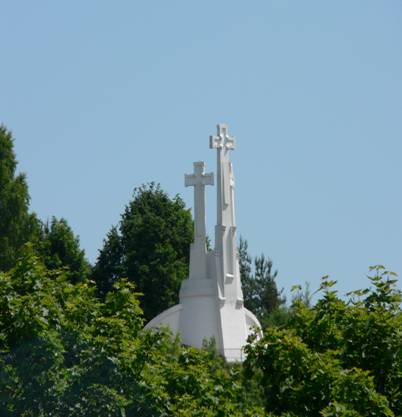
Photo: Wikipedia.org.
By KR Slade
The hill behind the castle tower in the Old Town of the city of Vilnius--the capital of Lithuania, is called ‘The Hill of Three Crosses’. So, how many crosses are on the Hill of Three Crosses ? Six ! Or nine, if you count shadows . . .
In the 14th century, according to legend, pagans killed seven Franciscan monks on this hill. Three monks were hung on the hill, and four were thrown in the river. Three wooden crosses were erected on this hilltop in the 17th century. Thus, the hill got its name.
In 1916, before the first Republic of Lithuania (1918-1939), the wooden crosses were replaced with an ensemble of three, more monumental, reinforced-concrete crosses. They were hollow, about two feet square and about three inches thick. The cross-arms span about eight feet; the height is about eighteen feet. The three-dimensional relief faces reflect light and shadow.
In 1950, the Soviets blew-up and buried the three concrete crosses, which are now placed on the ground just below the final summit climb of the hill. The old, raw concrete crosses are in-tact, but broken at their bases that expose their steel reinforcement rods . The twisted steel rods evidence an amount of force used in their attempted ruin. Amazingly, they were not completely destroyed. They remain now triumphant, on the ground, the paint long-since worn away by weather, neatly displayed on a grassy presentation, about fifty feet from the summit. The three recumbent crosses, still working in their retirement, make a resurrected statement of faith.
The newer three crosses, which since 1989 crown the hilltop vista, were constructed according to the previous general plans. But, there are visible differences in the frontal surfaces of the older and newer structures. In 1991, Soviets here became extinct.
I had mentioned to a local friend that I wanted to go to the Hill of the Three Crosses. He replied, “Why? It’s a hill. With three crosses. You can see the crosses from everywhere in the city.”
No. The Hill of Three Crosses has six crosses. Yes, you can see the three crosses from everywhere in the Old Town. But it’s the other three crosses--the one’s resting on the ground--the old retired ones, which vividly tell the whole story.
- Bookmark :
- Digg
- del.icio.us
- Stumbleupon
- Redit it
VilNews e-magazine is published in Vilnius, Lithuania. Editor-in-Chief: Mr. Aage Myhre. Inquires to the editors: editor@VilNews.com.
Code of Ethics: See Section 2 – about VilNews. VilNews is not responsible for content on external links/web pages.
HOW TO ADVERTISE IN VILNEWS.
All content is copyrighted © 2011. UAB ‘VilNews’.

 Click on the buttons to open and read each of VilNews' 18 sub-sections
Click on the buttons to open and read each of VilNews' 18 sub-sections 







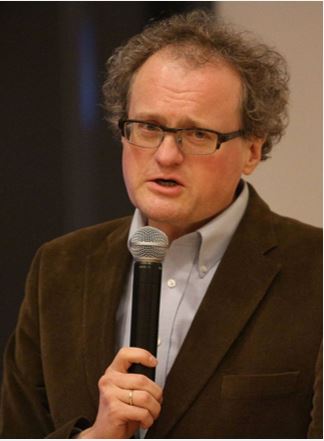
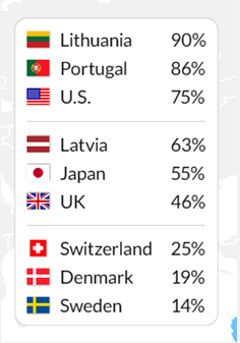
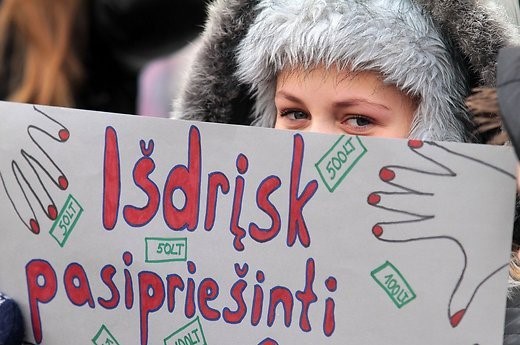



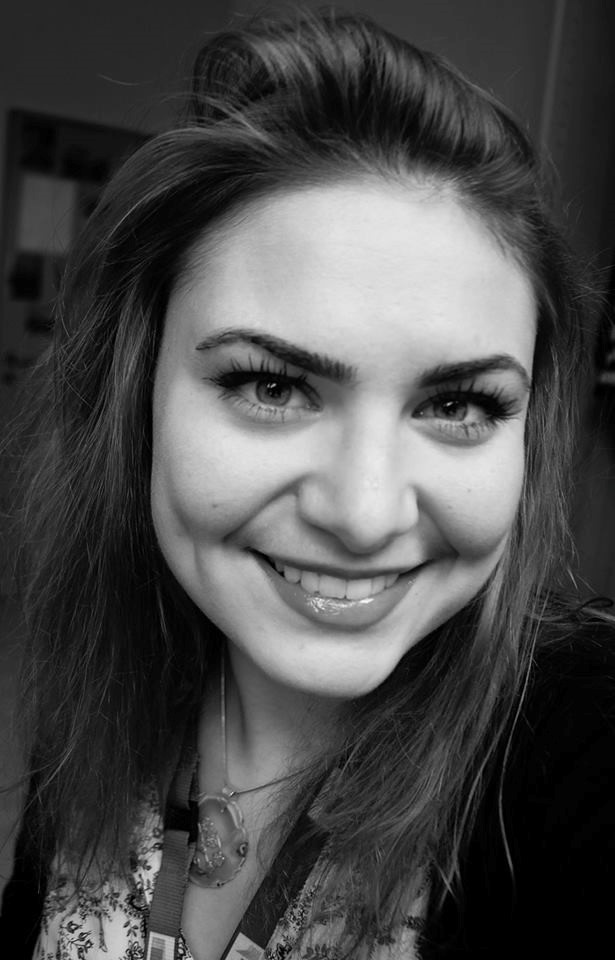
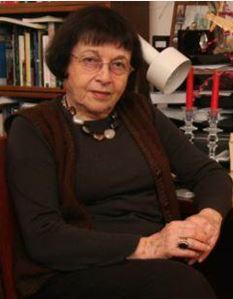
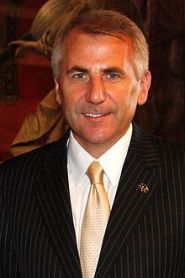
.jpg)
